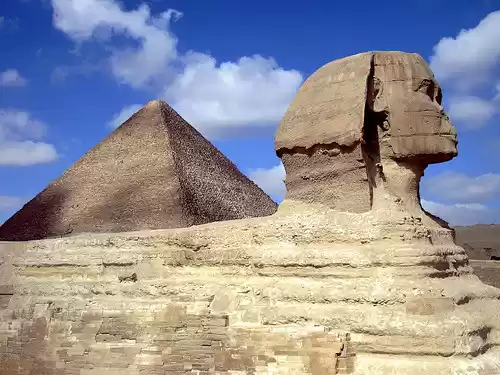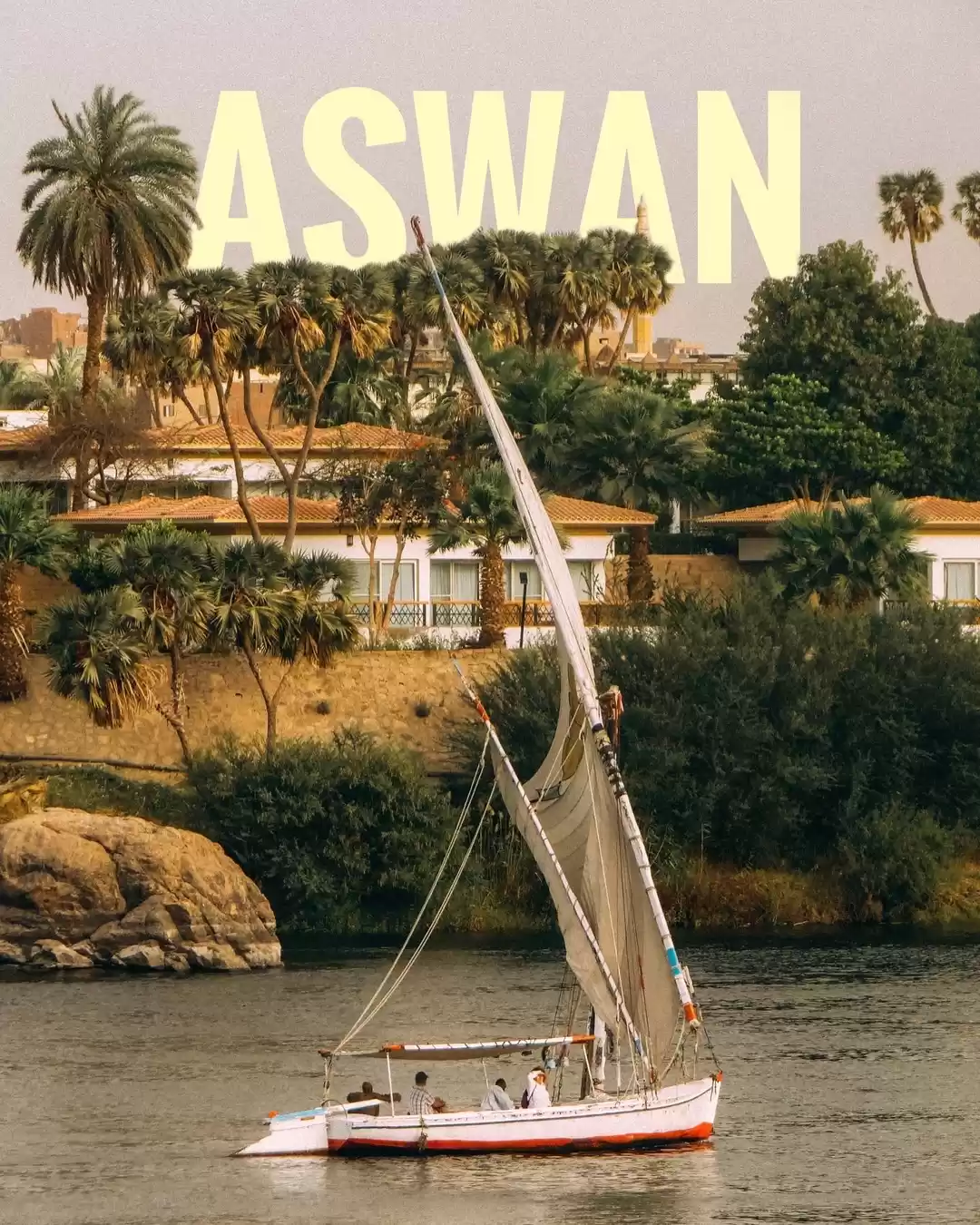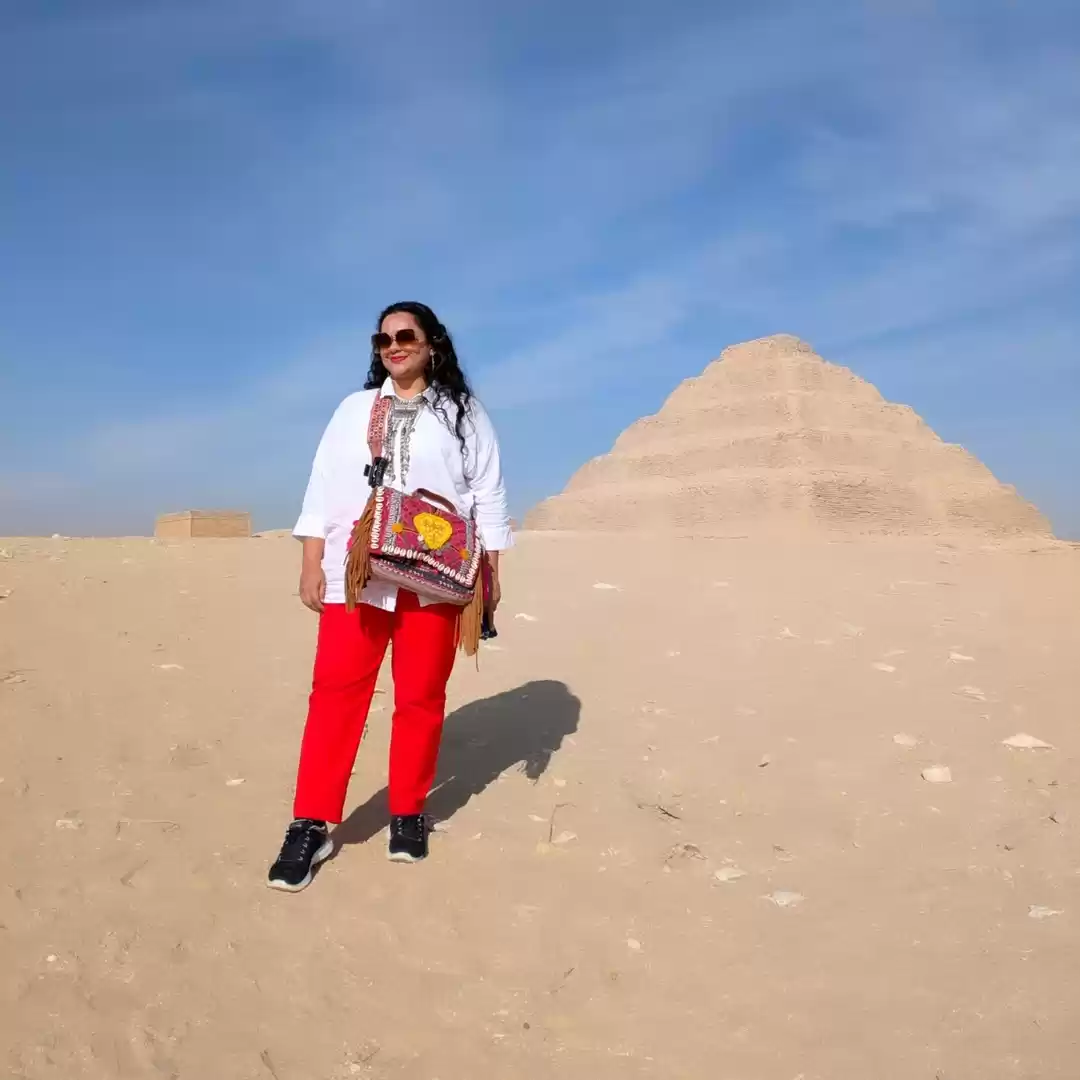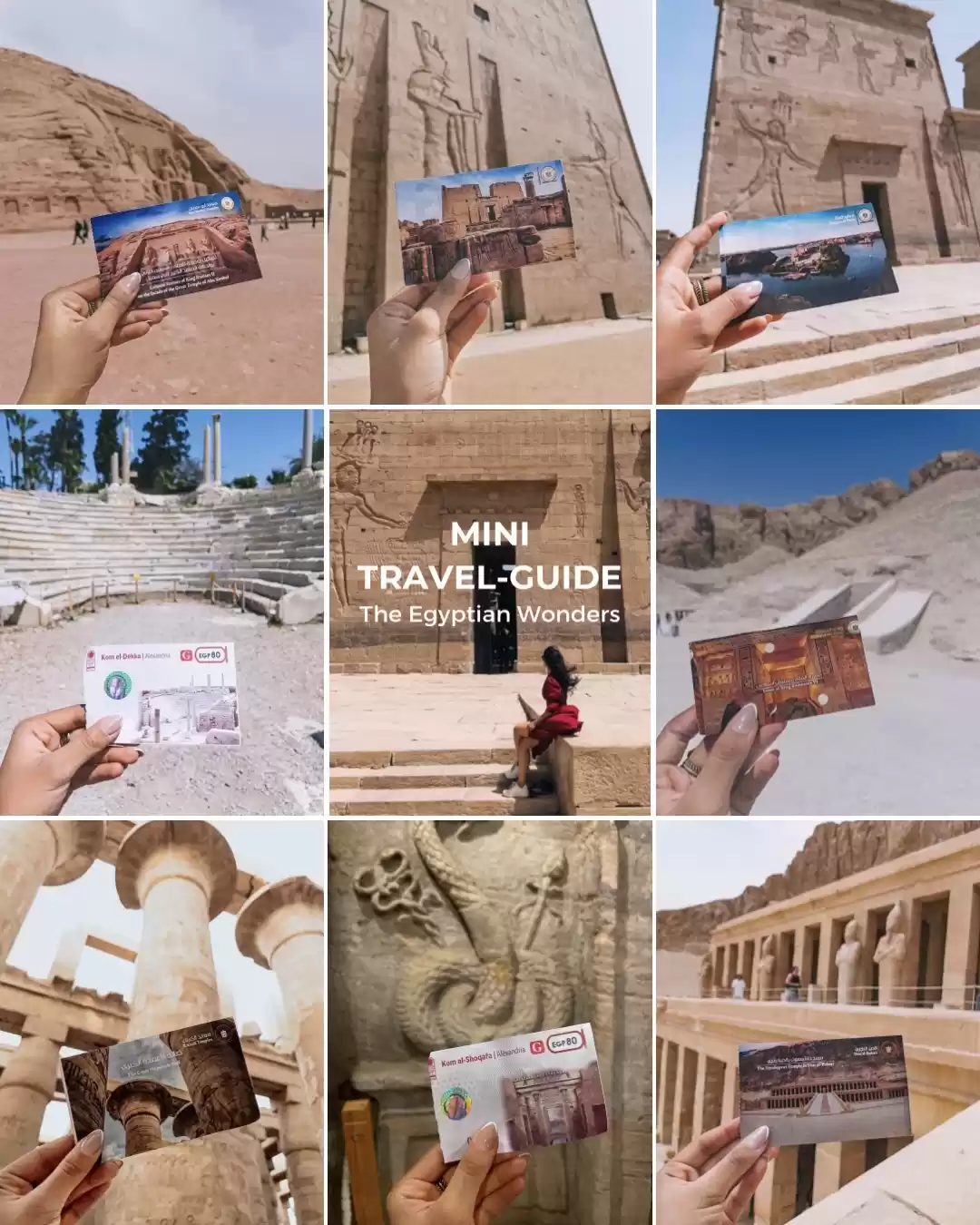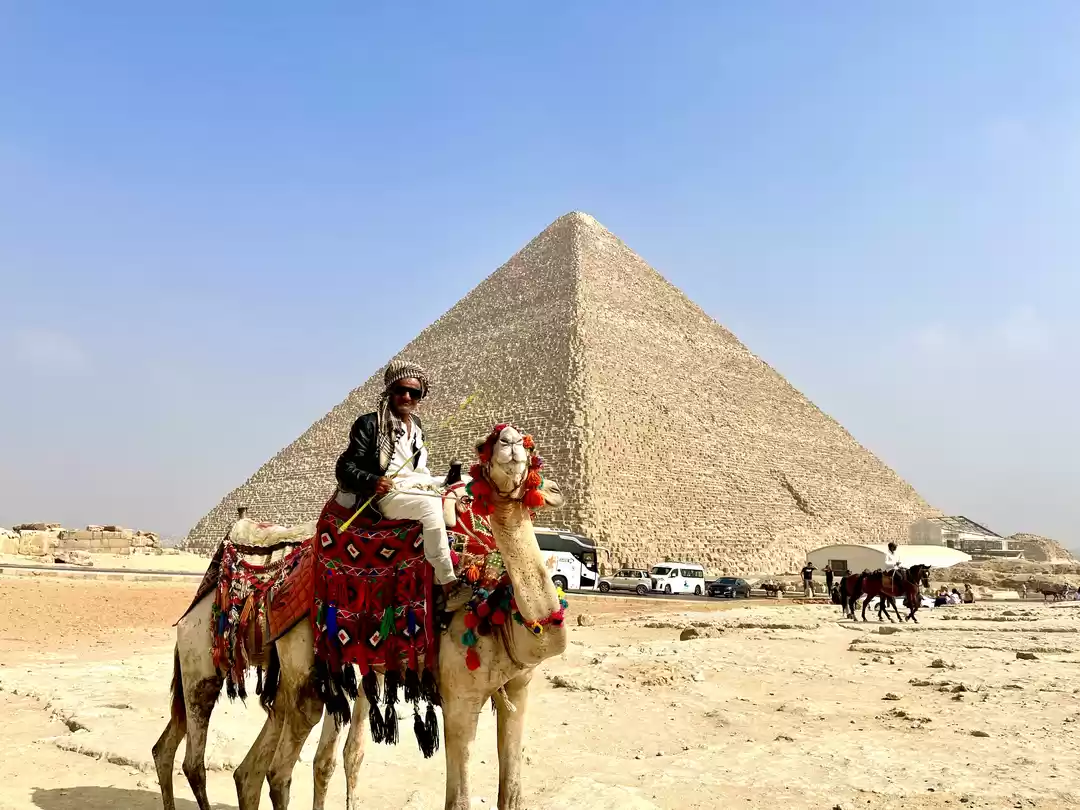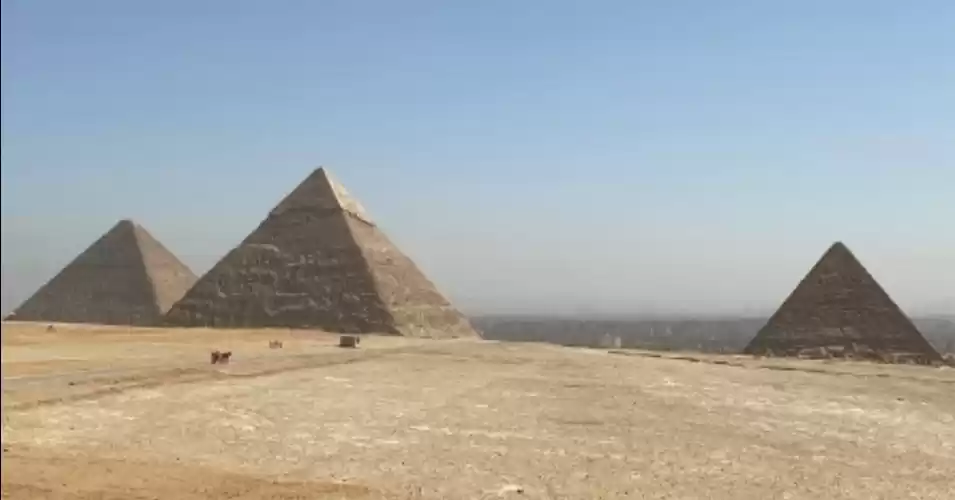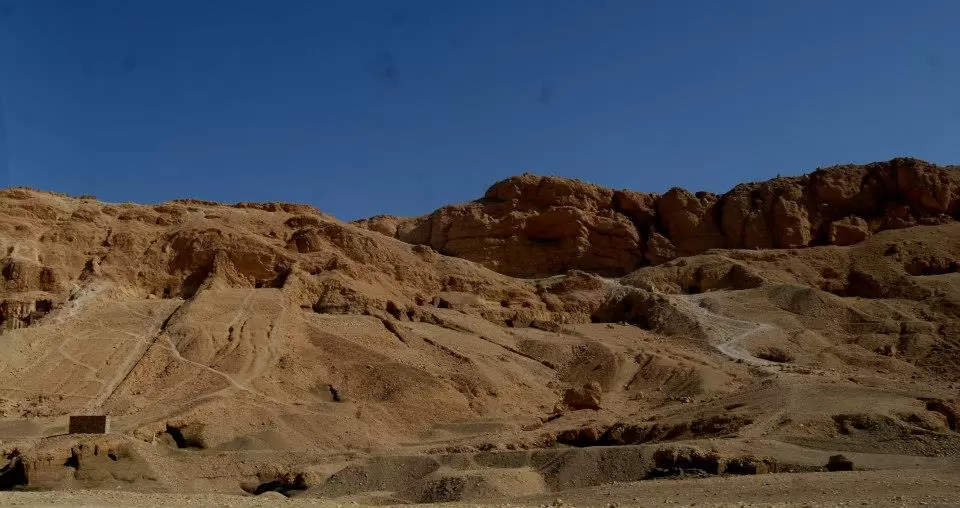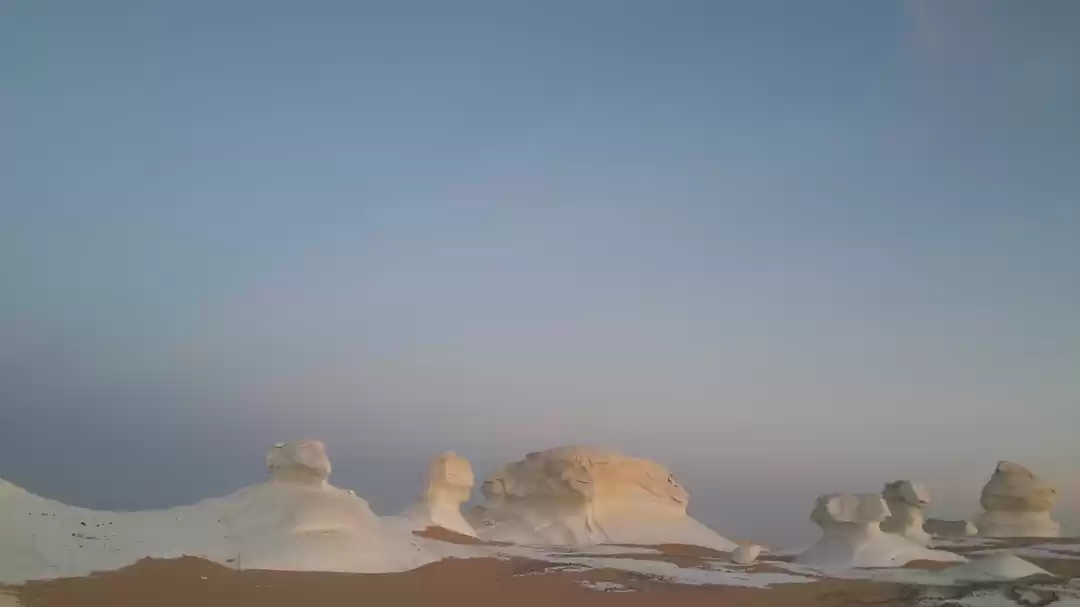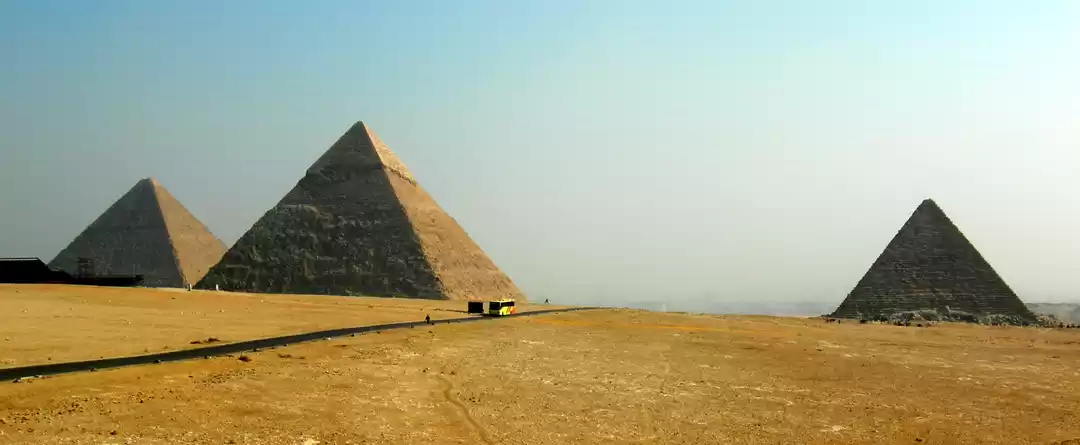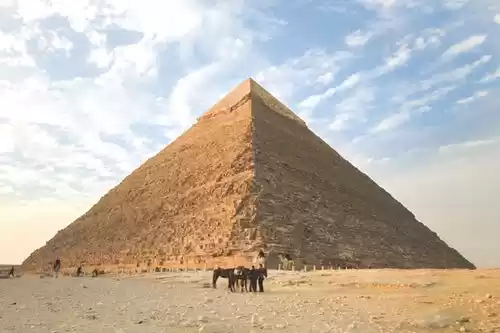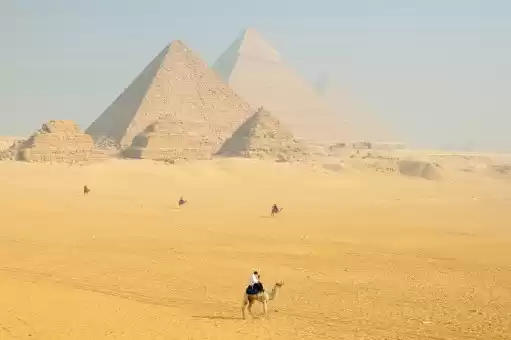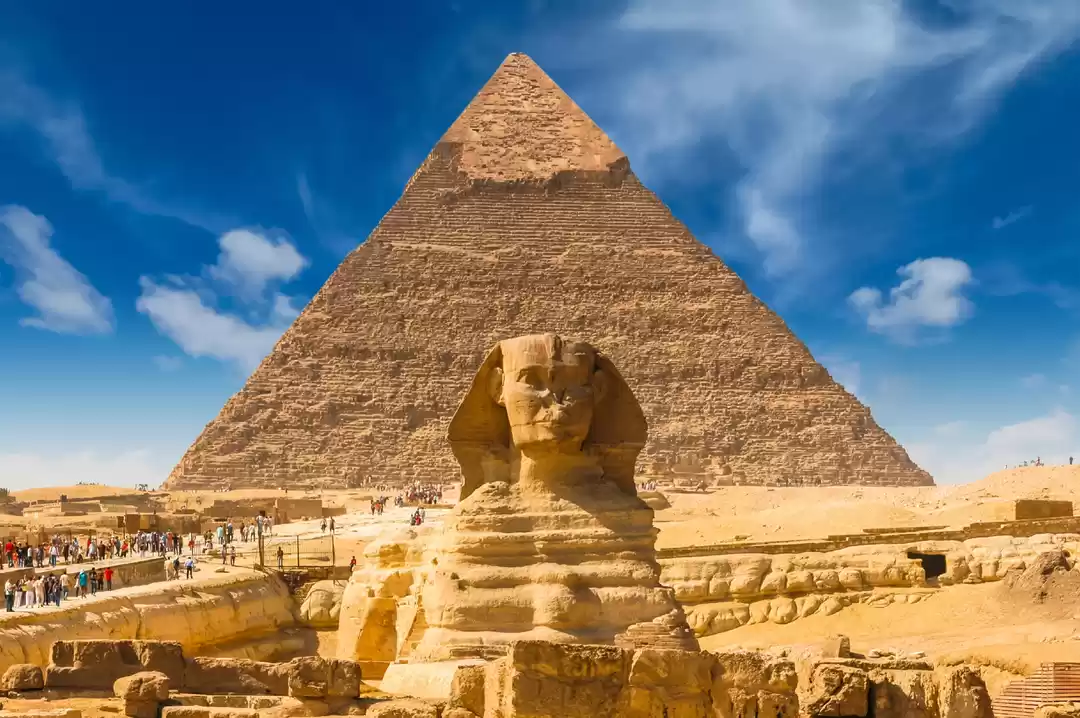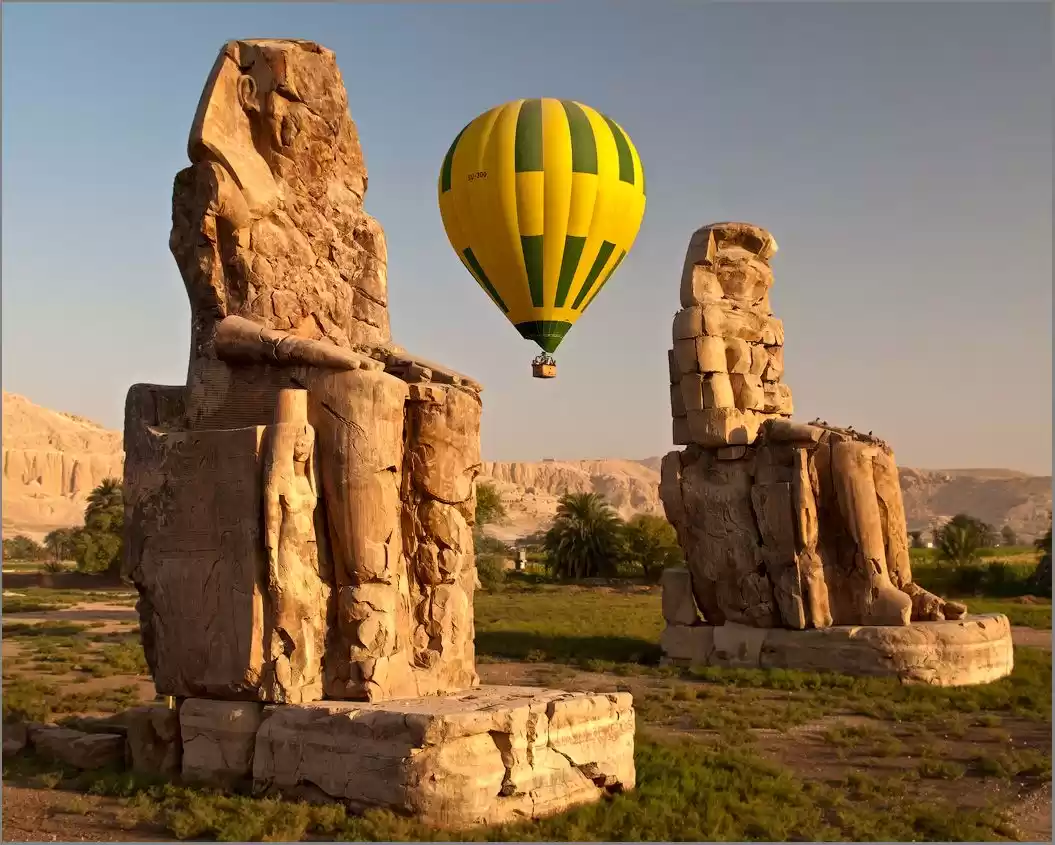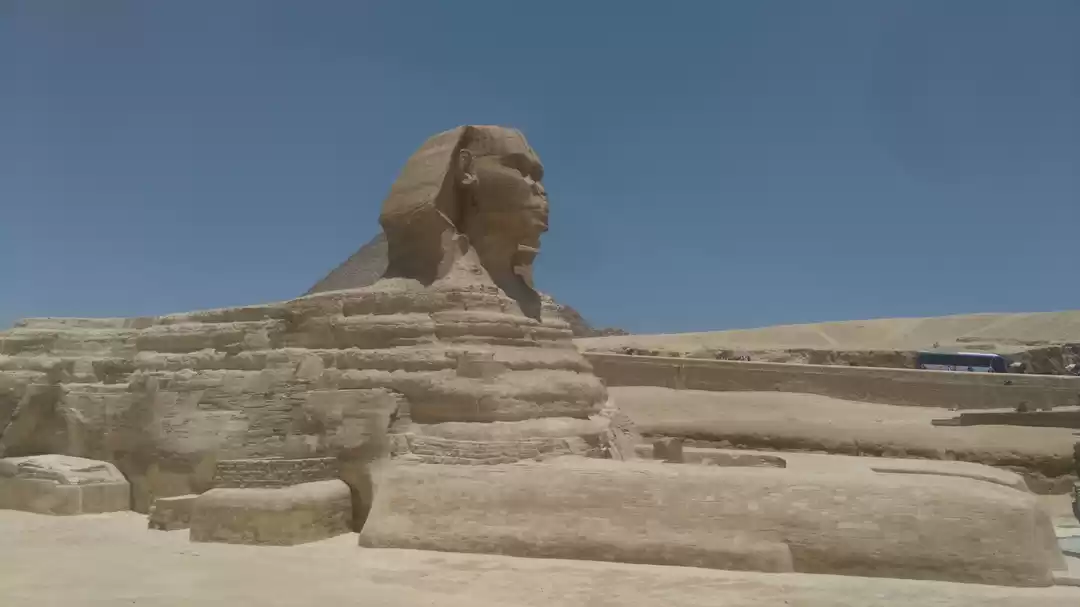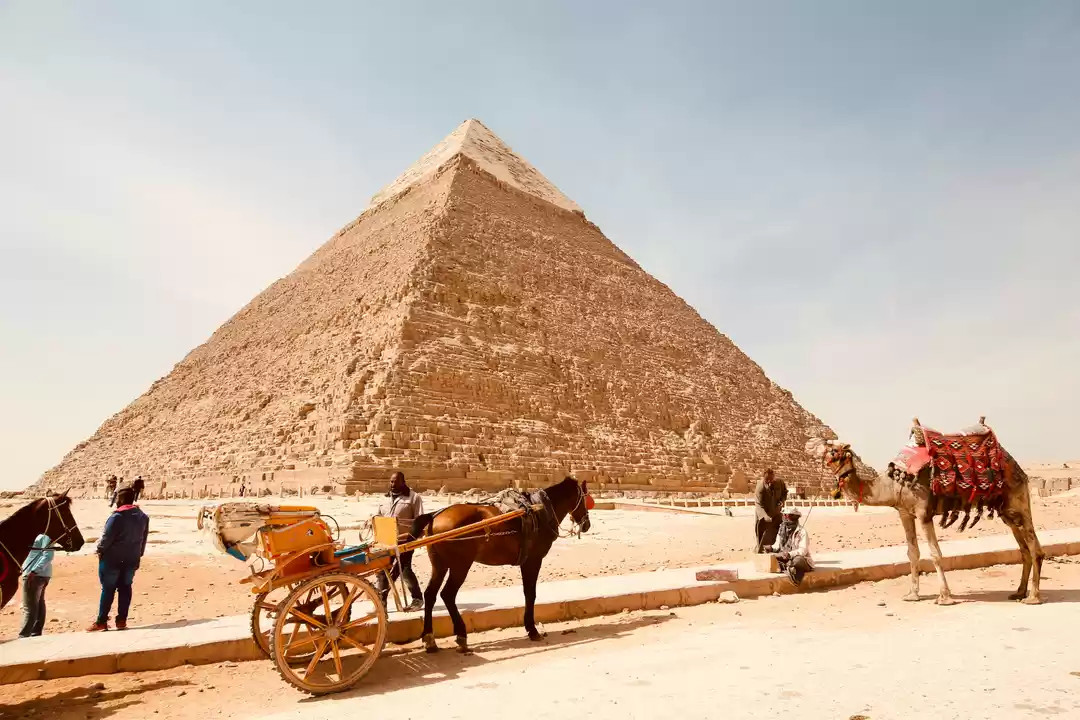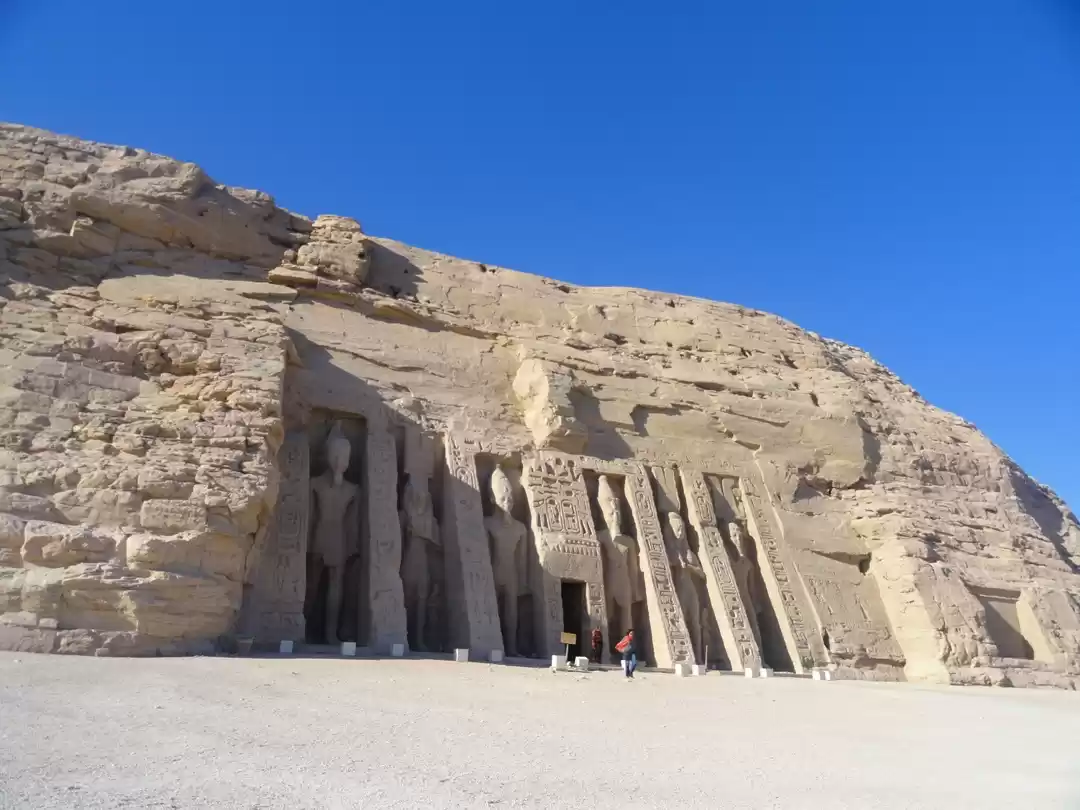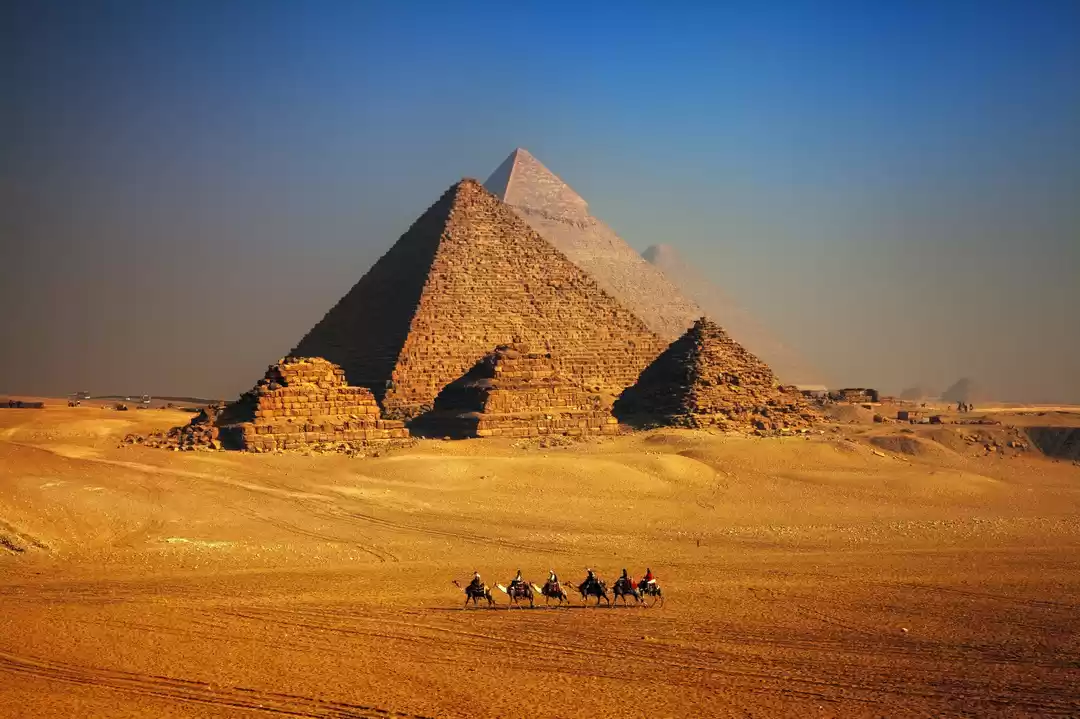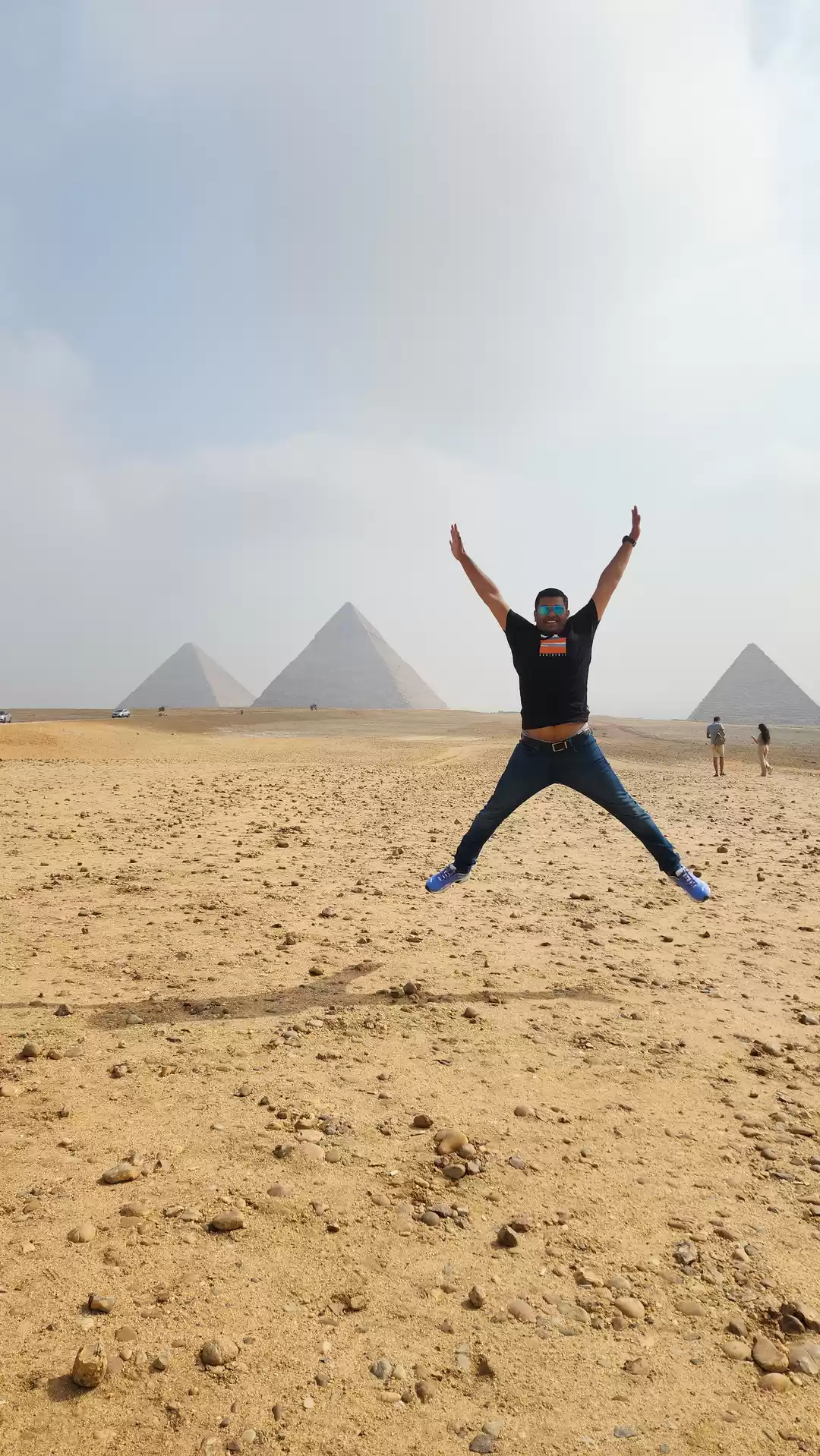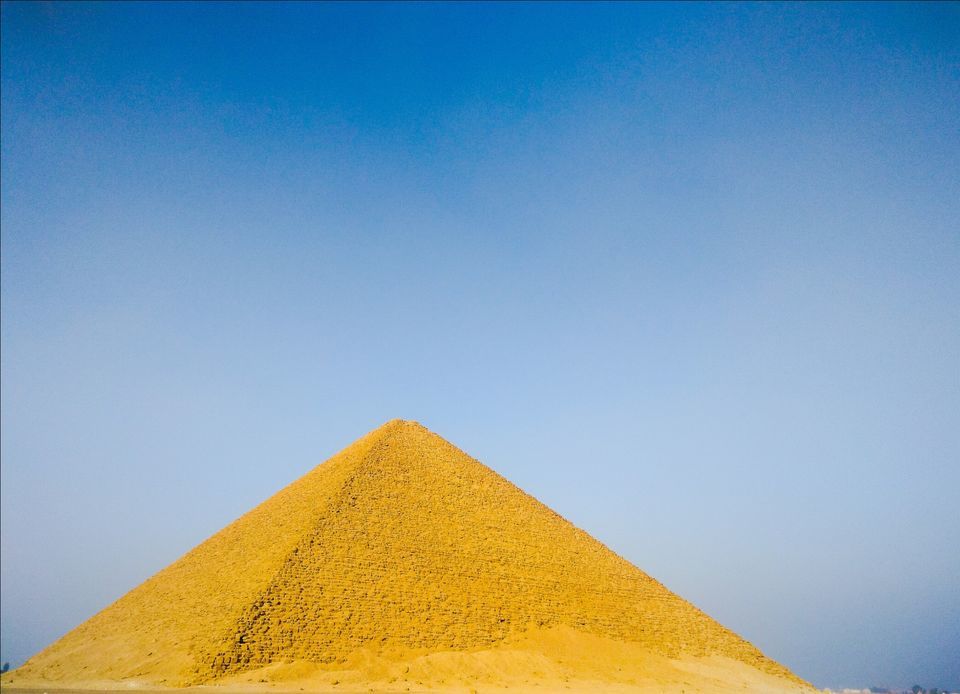
Money fills your wallet but travel fills your soul. Going by this maxim, my friend, Nikhil Anand, and I started scanning the globe to plan our first trip, soon after landing our first jobs. Scientists by profession, we carried out a meticulous feasibility study of the trip, considering factors such as availability of leave, weather at destination, ease of planning and money in hand. After eliminating several options, we finally settled on Egypt - the Cradle of Civilization.
The trip was planned five months in advance with a budget constraint of ₹80000 (including travel). And in spite of forces of nature being hell-bent on not letting it happen (cyclones and floods, literally!),our painstaking planning and on-point execution helped us experience a trip that was way more exciting than we had imagined.
What follows is a detailed memoir/itinerary of our travel in which we covered four major Egyptian cities and the White desert. I hope that it inspires you to undertake a similar journey. I have tried to be as detailed as possible with the places of attraction and the finances of the travel, leaving you with enough experience and money to undertake several more trips in the future.
Keep in mind to book flight tickets early (we booked ours in June) and start the visa application process about 40 days before departure. We acquired our visa through Thomas Cook and it costed us ₹5260 including taxes and service charge. You can opt for a cheaper route by asking a friend to submit (and pick) your documents at the Egyptian consulate in Mumbai or the embassy at Delhi.
Breakdown of expenses
Charges levied at every location and for each activity are given in the itinerary. What follows is a consolidated summary of these expenses.
Note : E£ 1 is around ₹4 and $1 is around ₹70
1. Visa : ₹5260 - Arranged through Thomas Cook
2. Travel : ₹38000 + E£ 300 = ₹39200
This cost includes all flights, trains (booked online) and local commute (microbus/Uber)
3. Entry tickets : E£ 3150 = ₹12500
Student tickets can be purchased at half the normal fee. Prices mentioned in the itinerary represent nominal fare.
4. Lodging : E£ 590 + $40 = ₹5100
This cost includes hostel/hotel stays in Alexandria, Cairo, Aswan and Luxor.
5. Food : E£ 300 = ₹1200
This number is an estimate which includes meals at all local restaurants and purchase of water bottles and snacks along the way.
6. Arranged Tours : $175 = ₹12500
This cost includes Pyramids and White desert camping.
The above total of ₹75760 covers all expenses except tipping and purchase of souvenirs. (E£ 1 is around ₹4)
Flights, trains and the pyramid tour were pre-booked. We carried $600 per person of which I got $270 converted to around E£ 4800. Make sure you travel with enough money, atleast 1.5 times that of expected expenditure.
All times mentioned are local for that country
1645 hrs | Train from Trivandrum to Cochin - ₹500
After a hectic half day at office we rushed back home to get our bags and make it to the railway station just in time to catch our train to Cochin.
At T-10 hrs we were full of excitement for this journey to the birthplace of settled society that awaited us.
We reached Ernakulam junction by 2100 hrs and left for the airport within an hour after having our last Indian meal (for the next nine days) at IRCTC Food Stop Diner. We left for the airport in an Uber instead of choosing bus or metro considering the time constraint of our flight departing at 0225 hrs.
0930 hrs | Flight from Cochin to Cairo (via Kuwait)- ₹16100
Seven hours later than planned, we left Indian soil aboard Kuwait Airways flight KU 358. The delay was due to the recent floods at Kuwait airport and Cyclone Gaja tormenting the Arabian sea.
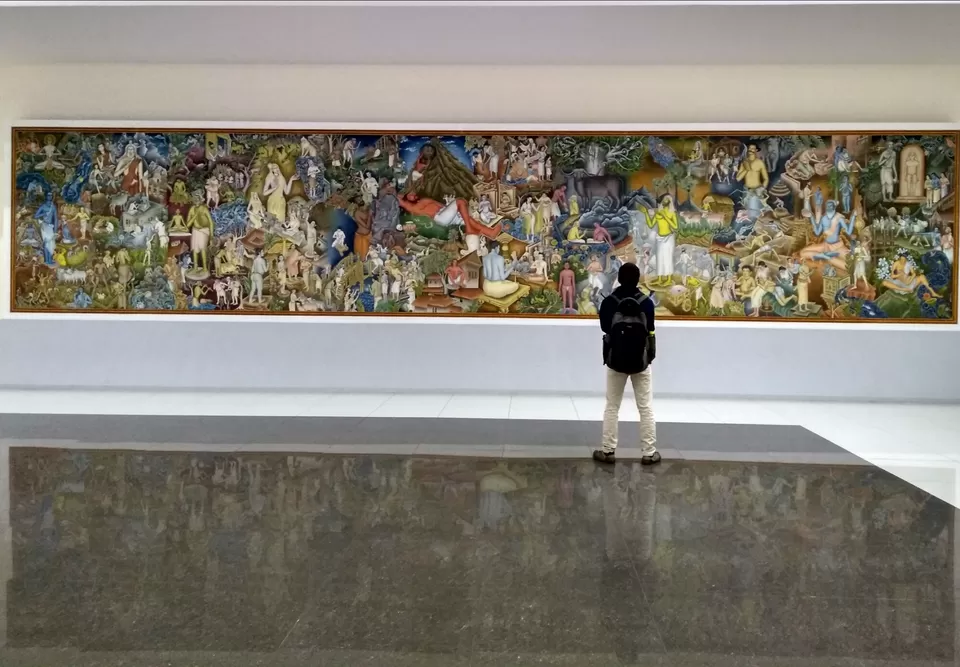
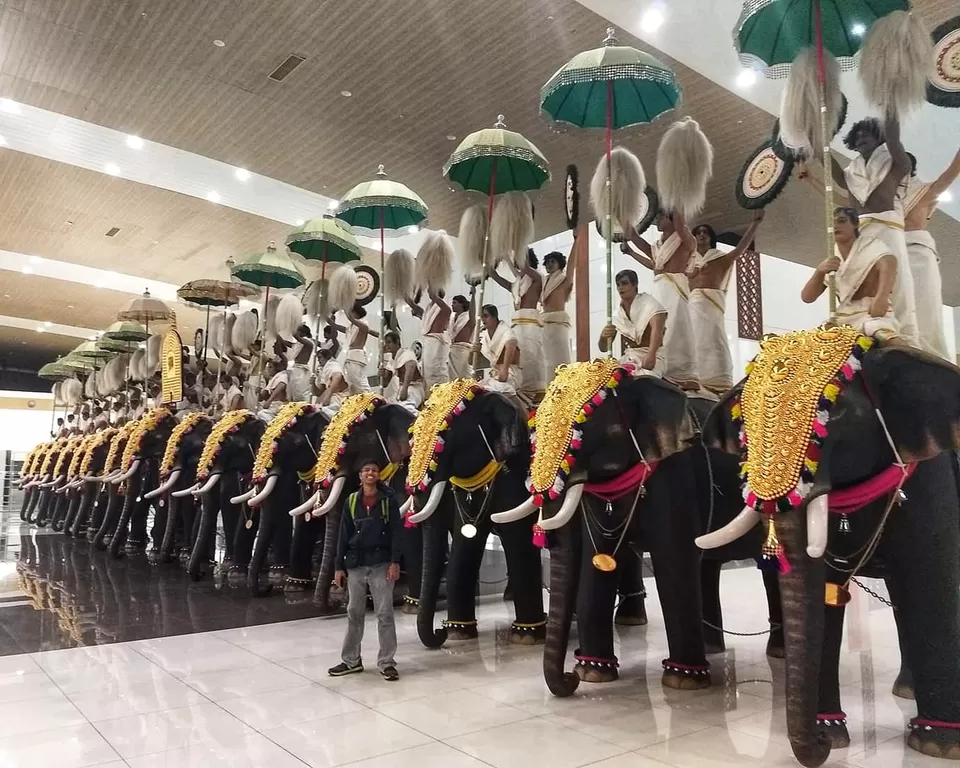
1200 hrs | Landed at Kuwait airport
We landed 90 minutes after our connecting flight had departed. There was mayhem at the transit desk with people stranded for over four days trying to get back to India/USA/France/UK/Canada/Nepal. Luckily, we only wanted to go till Cairo and the next flight which was at 1330 hrs (rescheduled to 1700 hrs) was available. However, we didn't want to break the line of transit desk because trust me, the police at this airport will make sure you don't try anything funny (they literally manhandled line breakers when informed by people who were already waiting). But it was because of their help only that we got out of the queue earlier than expected (we waited in line for over 90 minutes).
The authors sincerely hope that no traveler faces what was witnessed in the wake of Kuwait floods but also believe that such experiences are very valuable in life.

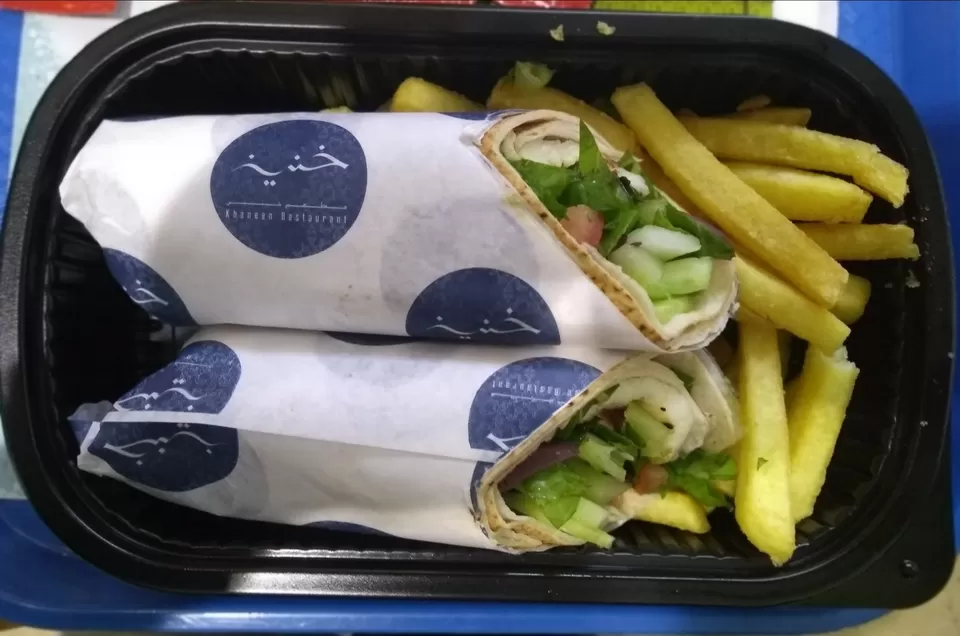
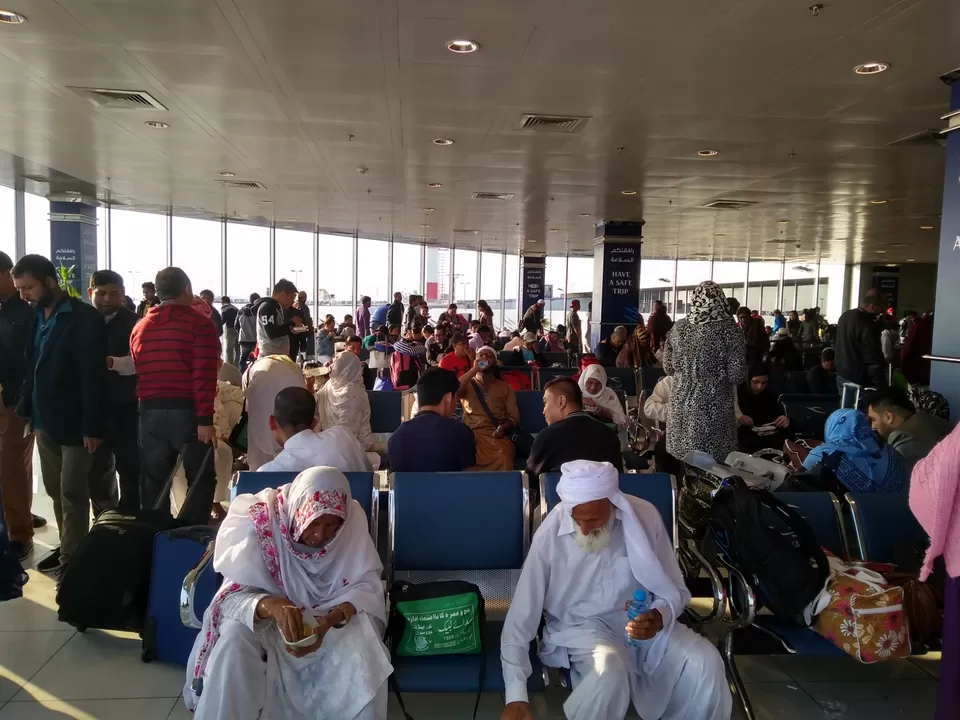
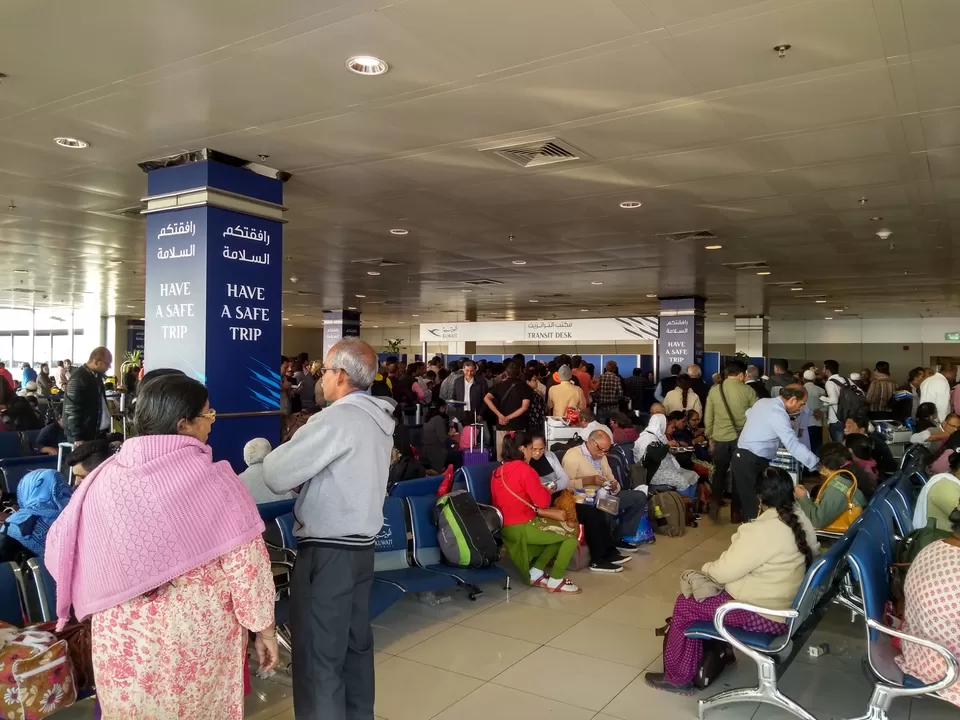
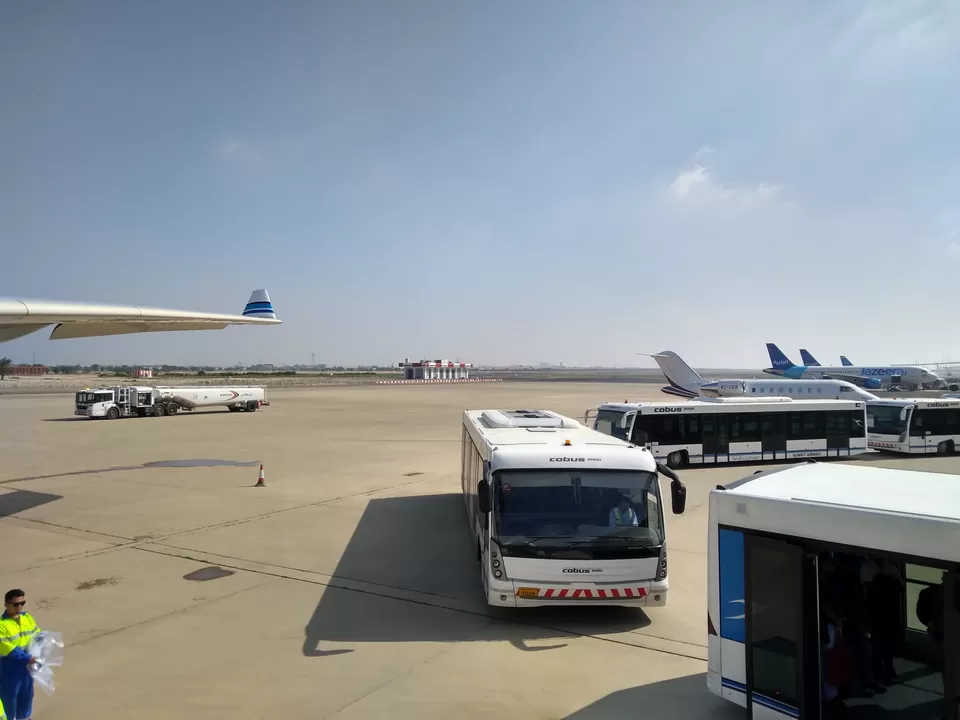
1900 hrs | Flight from Kuwait to Cairo
The gate number for our flight was not displayed even 45 minutes before departure. Upon inquiry at a counter we were informed that our flight is from a different terminal. We reached our flight along with many disgruntled passengers after two security checks and two bus changes. Courtesy of the chaotic Kuwait airport. The flight was further delayed by 2 hours after all the passengers had boarded due to overload at the ATC.
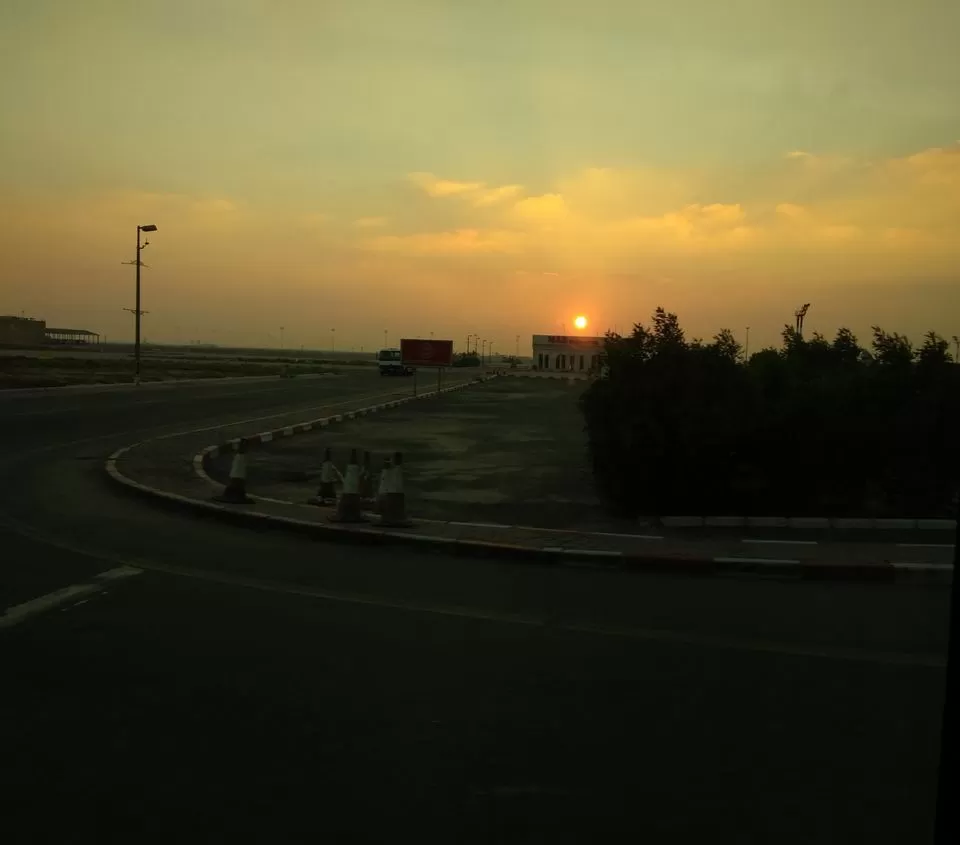
2030 hrs | Landed at Cairo International Airport
Our arrival was delayed by eight hours and we had already missed the train to Alexandria. After getting $200 converted to E£ 3600 and getting an Etisalat sim card, we got out of the airport looking for modes of conveyance to Alexandria. There are tourist help-desks at the airport which provide hotels and cabs. However, these fares are far higher than what you can find outside.
We took an airport shuttle to the airport bus stop and found out that the next bus to Alexandria was at midnight. Overhearing our exchange at the ticket counter, a taxi driver offered to help us (eventually scammed) by driving us to Almaza bus station where he claimed the recently departed bus would be halting for half an hour. We ended up paying him E£ 100 for a mere 15 minute drive.
(Tip #1 : Always confirm fare per person before boarding a taxi/microbus/ferry)
Based on budget and time available at hand, a direct taxi to Alexandria at E£ 700 can also be considered.
0330 hrs | Check in at Semiramis Hotel - E£ 260
After an arduous 3 hour journey (In which I slept like a baby) we went to bed as soon as we entered our room. All hotels across Egypt offer complementary breakfast and this one was no exception. We enjoyed a breakfast of bread, eggs, juice and beans on the seventh floor with a glorious view of the Mediterranean sea.
(Other cheaper lodging options can be considered in Alexandria. Hotels along the sea tend to be more expensive)

0915 hrs | Citadel of Qaitbay - E£ 60
This 15th century citadel is constructed from the rubble of the famous lighthouse of Alexandria which was one of the seven wonders of the ancient world. We had arrived before the peak tourist influx and enjoyed the relatively empty place. The upper level offers stunning views of the Alexandria coastline.




1045 hrs | Bibliotheca Alexandrina - E£ 70
Bibliotheca Alexandrina is an architectural masterpiece. Designed by the combined efforts of five architects, it has won many international awards. The sloping roof which represents the rising sun of knowledge is inclined exactly at 16 degrees to keep illumination from sunlight always at a maximum in the eleven floors that comprise this gigantic trove of books. There are free tours of the library with an English guide every hour and a Culturama show that displays the three periods of Egyptian history on a 180-degree panoramic interactive computer screen with the help on nine projectors (first of its kind in the world).
Explore the library virtually at bibalex.com


The outer wall of the library is inscribed with hieroglyphs and letters from several living and dead languages, from all over the world.


The library also offers a lot of specialized sections, open exhibitions and museums. We spent more than three hours here absorbing the grandeur of art and knowledge around us.





1515 hrs | Pompey's Pillar - E£ 80
This 21 m tall ancient monolith located at the Serapeum of Alexandria is the largest of its kind ever built outside imperial Rome. It was carved with a single block of red Aswan granite to commemorate the victory of Roman emperor Diocletian over an Alexandrian revolt. (you guessed it right, it is erroneously dated to the time of Pompey)
We arrived here 2 minutes before a tourist bus full of Indians unloaded at the ticketing counter and managed to get pictures of the pillar untainted by human presence.

The tunnels below this structure can be unlocked by tipping the guard to unveil a statue of the God Serapis in the shape of a bull.


1545 hrs | Catacombs of Kom-el-Shoqafa - E£ 80
This burial ground of nobles which was later made public was discovered when a donkey fell down a well which was used to descend the mummified bodies. As tradition demanded in those days, family members would visit the tombs and celebrate the journey of the soul to the afterlife. The aftermath of this celebration was broken bottles and pots of clay which had served as vessels for wine and food. When discovered this site was a mound of shards, which translated to arabic is Kom-el-Shoqafa.
We managed to have a guide convince us that his services were required and ended up having the information given at the entrance narrated back to us in front of the tombs for E£ 50. The influence of Graeco-Roman culture is evident in subliminal design/drawing changes in the tomb of Tigran. The underground burial passages have a very eerie aura emanating from them. Walking through more than three hundred of tombs thirty meters below the Earth is a surreal experience.





1930 hrs | Calithea - E£ 20
Before boarding our train to Cairo, we quickly and economically satiated our hunger at this old Greek eating joint by the sea. It is here that we learned that bread is free with salads in Egypt.
(Tip #2 : When short on cash, order salad at a local restaurant)

2030 hrs | Train from Alexandria to Cairo - E£ 55
The locals were somehow unaware that the main station in town is called Alexandria railway station by Google (rather we were unaware what is the local name for this station). The enthusiastic waiter who was graciously tipped at Calithea advised us to go to Sidi Gaber station and catch the train from there. We reached the station in a super cool taxi playing uber cool Egyptian music. I only wish that I had asked the driver for the name of the song (got to tune in to Egyptian radio). Another important thing I would like to bring to light at this point is that Egyptians drink tap water, which is perfectly safe, but, tourists are advised not to experiment with their bodies by ingesting this slightly highly chlorinated water. This makes buying bottled water a necessity. And a lot of shopkeepers con the tourists in this process. As noob tourists, we also got scammed at the railway station and ended up buying 600 ml water for E£ 10.
For the benefit of the readers;
Standard rate of bottled water : E£ 5 for 1.5 L (Big Bottle) : E£ 3 for 600 ml (Small Bottle)
(Tip #3 : Ask for the price of a water bottle to validate if the shopkeeper will try to scam you)
0010 hrs | Arrival at Ramses Station
We reached Ramses station in Cairo by midnight and walked about 1.5 km to our hostel in downtown Cairo. We had expected the city to be asleep, but on the contrary, it had already begun preparing for the next day. Bakeries were firing up ovens at full throttle to supply the citizens with their daily dose of bread, Tea stalls were running in full swing to provide refreshments to the hawkers who were packing their wares and heading home to catch just enough sleep to allow them to come back and repeat everything again. It looked like Mumbai, but in Arabic.
0045 hrs | Check in at Safary Hotel - E£ 110
Unlike the name, this place is actually a hostel with super cool hosts. It is pretty hard to find the place because it is on the fifth floor of building whose entrance is camouflaged with local vendors in a bustling street (we had arrived after midnight). Also, there is no lift. So the weary travelers have to climb five floors on foot. The place is pretty decent with dormitories as well as single rooms available. We were given two beds in a four bed room. Luckily nobody else had come so we had the whole room to ourselves. We enjoyed a similar but less royal breakfast here as compared to Semiramis hotel. We also forgot to wash our plates (this mistake was not repeated when we checked back in after five days).
For this day we had booked a package by Emo Tours Egypt for $55 (per person) which covered the Giza complex, Saqqara, Memphis and Dahashur. Entry tickets and lunch was included in this deal. We were accompanied by a very friendly English speaking guide Amr Ahmad (find him on Facebook) and his not English speaking driver Mostafa (yes, I share my name with every third person in Egypt). We were picked up from the hostel by 0830 hrs and started our pyramid-ian day.
0930 hrs | Giza Plateau - E£ 160
Words cannot describe this mammoth limestone and granite construction. The Great Pyramid of Giza which houses the tomb of King Khufu (a.k.a Cheops) is so huge that a selfie with the entire structure is next to impossible. It stands 146m tall - equivalent to three and a half PSLVs.
Unfortunately, it was a bit colder that day than expected. This had caused the Cairo smog to linger for a while longer in the morning. We were unable to get a glorious clean view of the pyramid from afar. But all this is forgotten in the shadows of the memory of climbing the pyramid one step higher than allowed and getting a picture clicked.
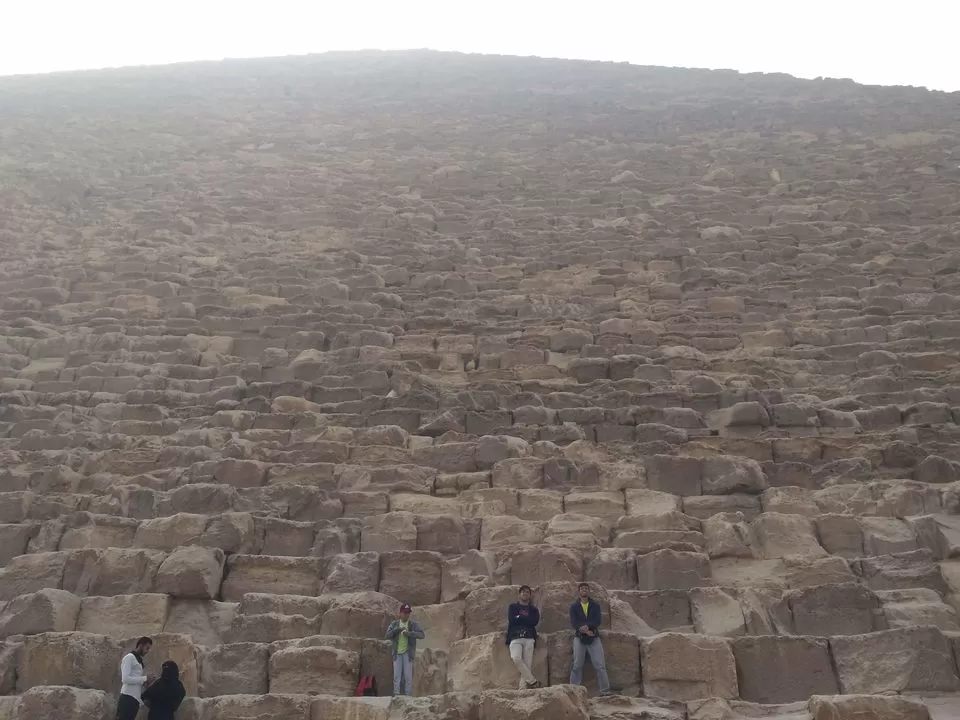
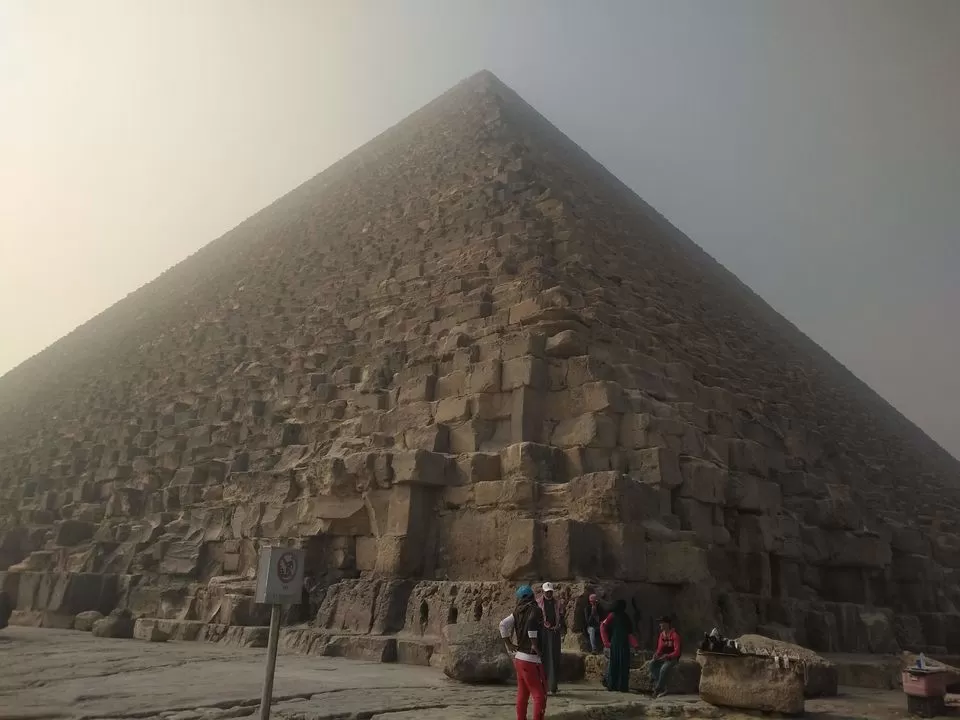
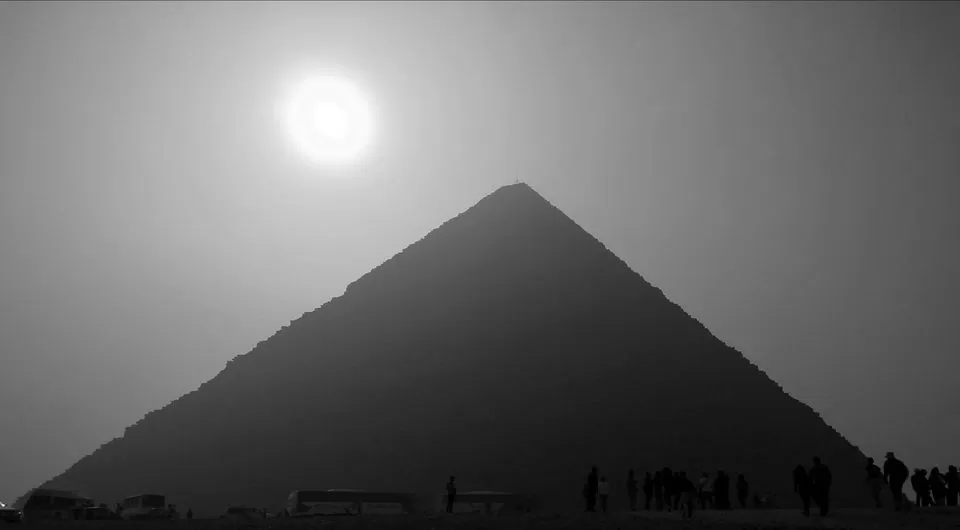
The pyramid of King Khufu is flanked by the pyramid of King Khafre which is flanked by the pyramid of King Menkaure. Three smaller pyramids stand behind the smallest of the great pyramids and supposedly are the burial places of King Khufu's mother, wife and daughter.

South of the pyramid complex resides the Great Sphinx of Giza, limestone statue of a mythical creature having the body of a lion and head of a human. This structure is proclaimed to be the worlds largest oldest statue, supposedly constructed during the reign of King Khafre. It has been uncovered over many years starting from the head to what is visible today.

1130 hrs | Saqqara Archaeological Site - E£ 150
Our next stop was Saqqara. Here we saw the stepped pyramid of Djoser which is also the oldest stone structure in the world. It is not as huge as the pyramids in Giza, but its unique form of architecture has its own charm. The pyramid is built as six mastabas or steps, each being an additional layer which was unplanned at the inception of the construction. There is also a giant court in the periphery of the pyramid which is supposed to help the king to eternally perform the rituals associated with kingship in his afterlife.
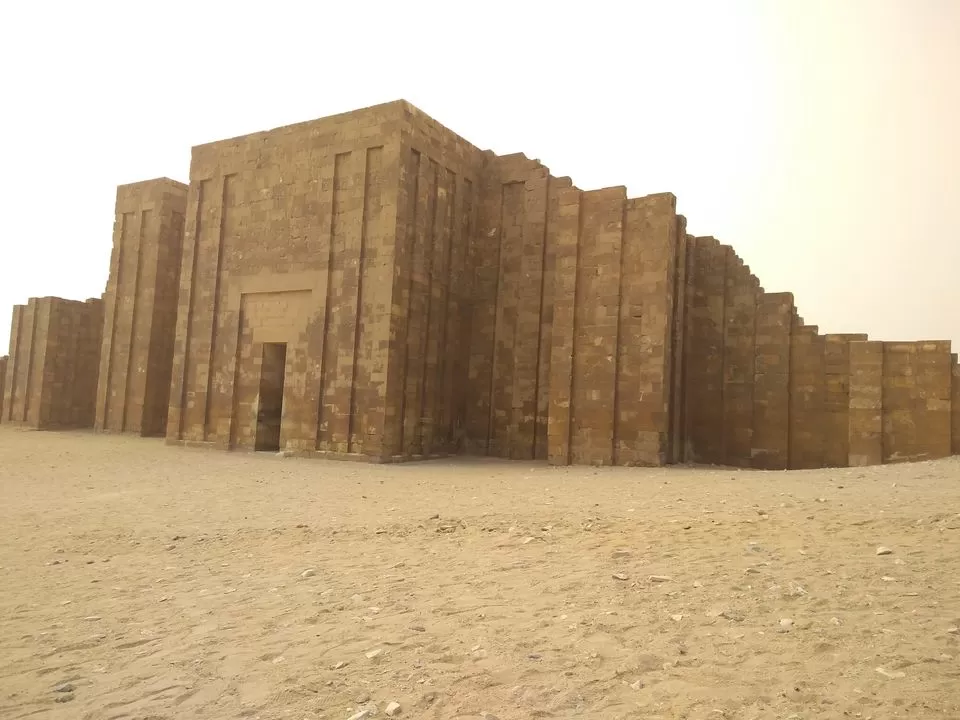
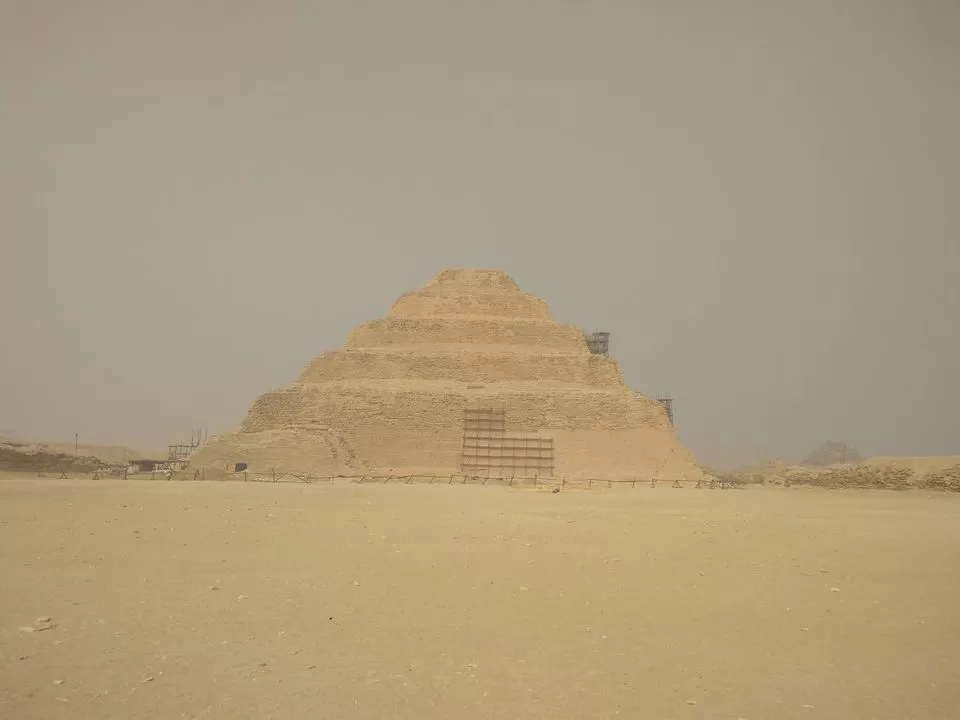

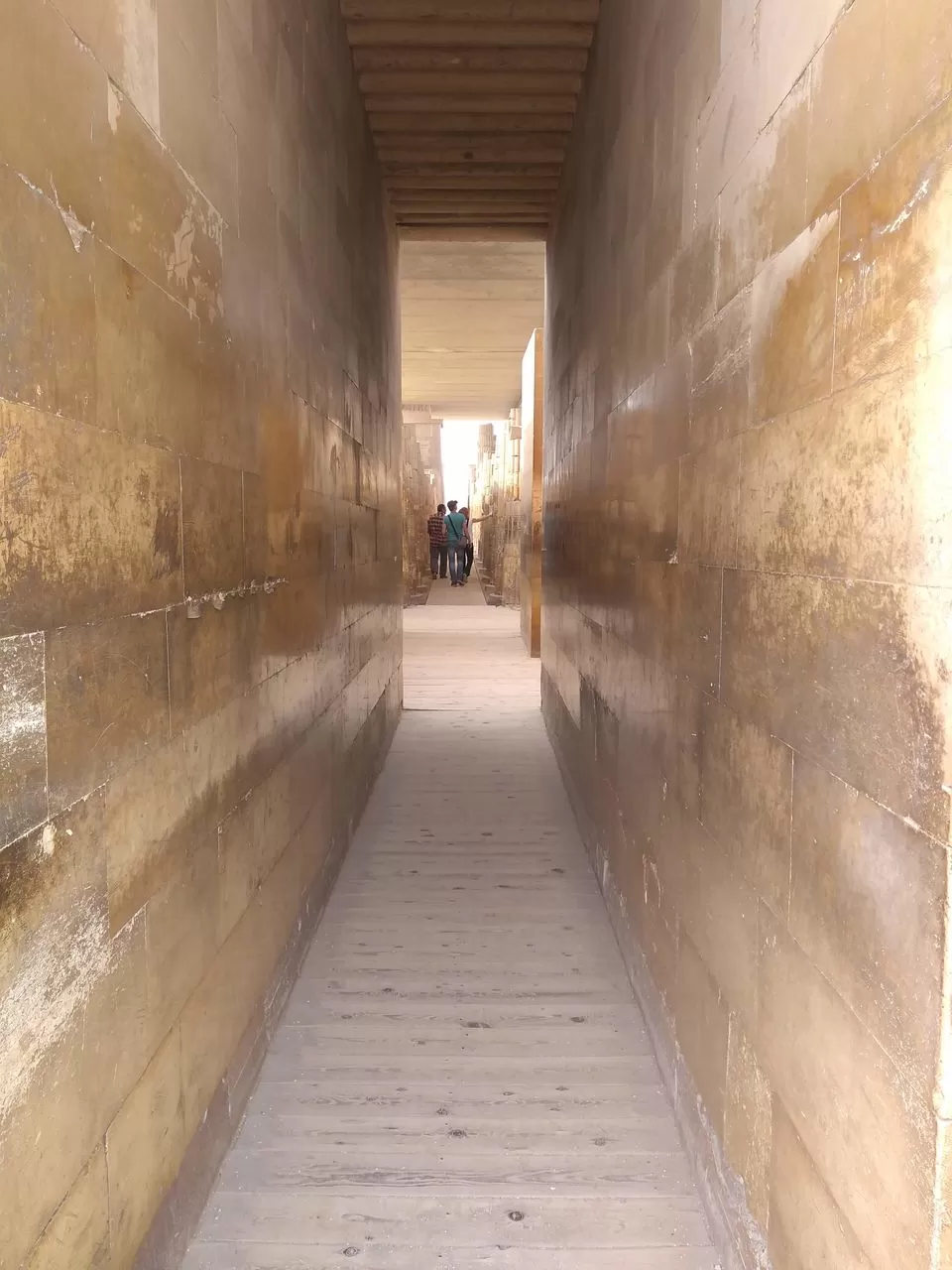
We had our lunch in a restaurant outside the stepped pyramid compound. We had totally not expected the opulent traditional Egyptian lunch. There was only salad and bread at the table when I joined after washing my hands. It was the same salad we had had in Alexandria last night. Knowing what it had costed us there, we assumed that our $55 were not put to good use in the category of food. However, the waiter kept bringing more variety of food starting with some sort of rice spring roll, aubergines in olive oil and followed with vegetable curry, rice and my favorite shish taouk. The guide who was probably accustomed to this lunch was enjoying the astonishment on our faces.
1400 hrs | Memphis - E£ 80
At this world heritage site we saw three (among many) intricately sculpted statues of King Ramses II (one of them was found in a nearby lake) in detail. The muscles, eyes, double crown, false beard and curvatures of human body are carved in great detail on all the statues. It leaves no doubt that he was indeed the greatest king to rule over Egypt.






1530 hrs | Dahshur - E£ 60
This site has three pyramids. First one which bears no resemblance to a pyramid at all. The second is the bent pyramid with two different rising angles. And the last one is called the Red pyramid. It was the penultimate pyramid before the construction of Giza complex. Standing 104 meters tall this pyramid has a heavenly charm to it, maybe because of the clear blue skies. Here you can see how the Egyptians learnt the art of pyramid construction through the know-how of transitioning from step-sided pyramids to smooth-sided pyramids.
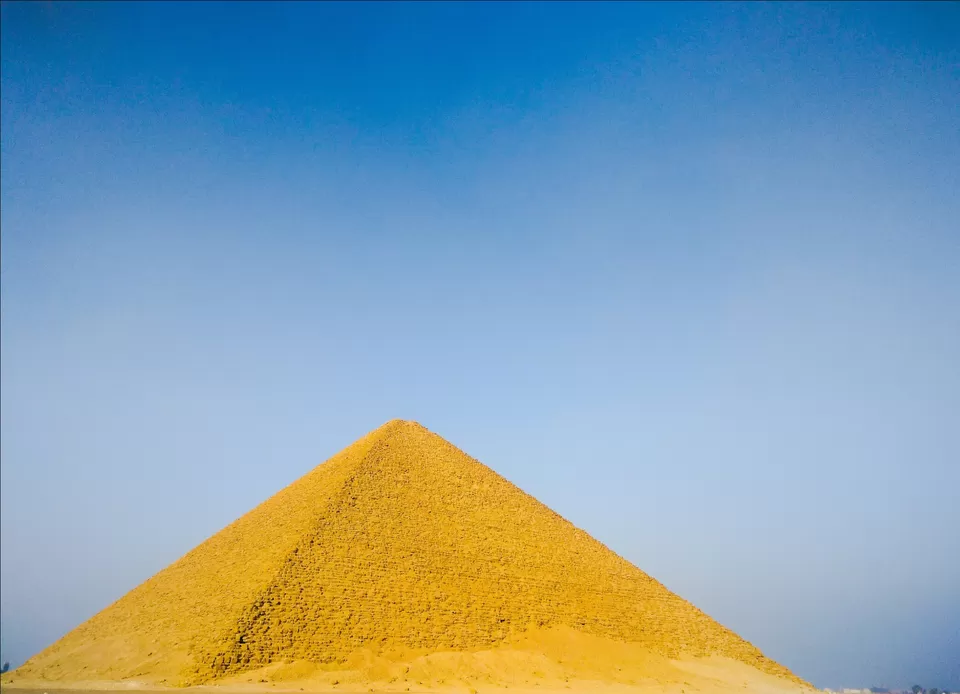
Unlike the Giza pyramid where entry inside the pyramid is chargeable at E£ 300, the entry inside this pyramid is included in the basic entry fare. We climbed down more than 150 steps to descend into the darkness of this burial chamber. The narrow passage keeps getting narrower by the step to make you bow to the king as you approach His Majesty King Sneferu. The view from inside is baffling. Here you see from the inside how the rocks were stacked without support of of any binding agent to build this gigantic structure.
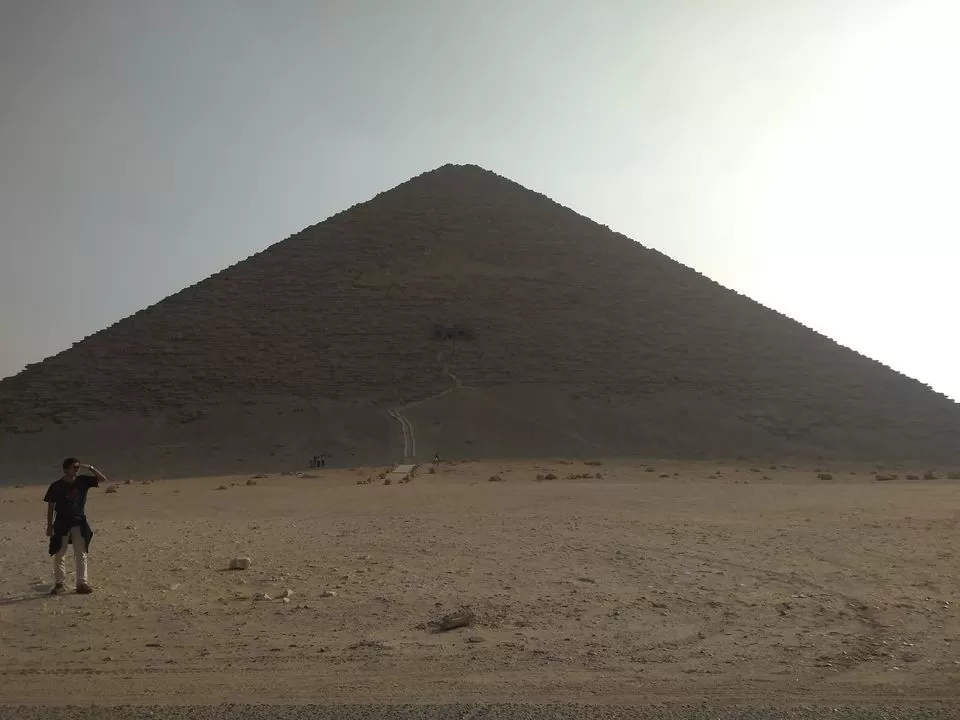
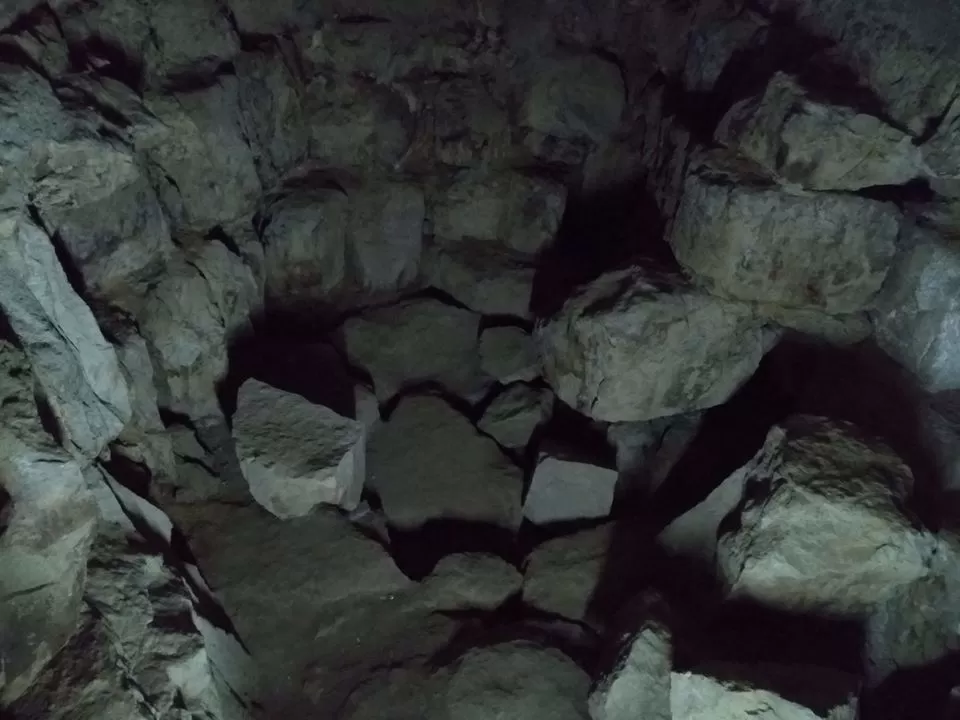
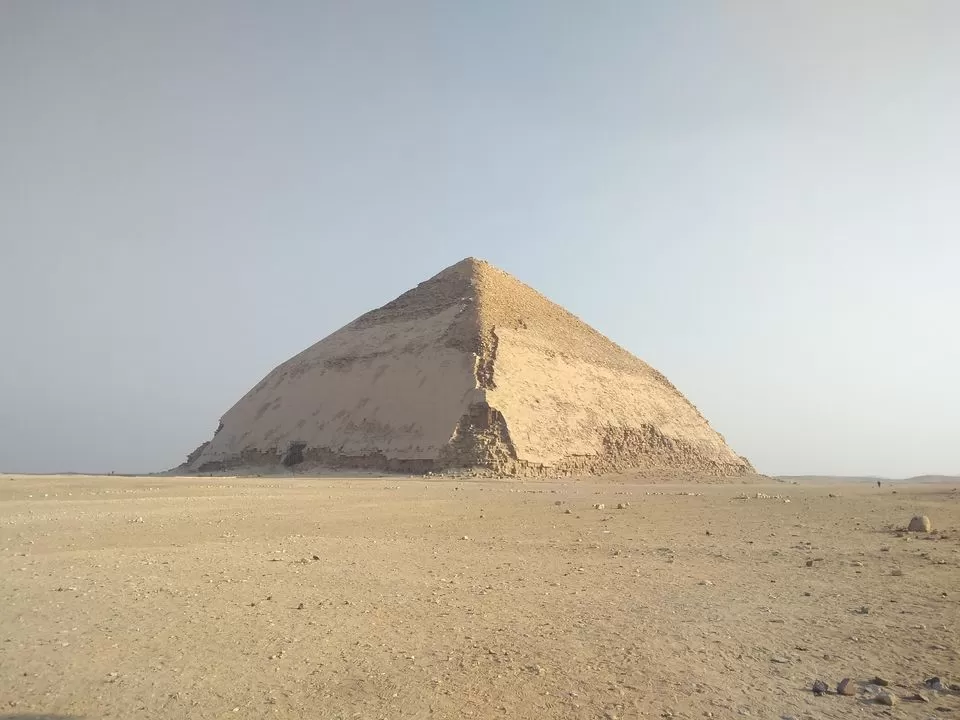
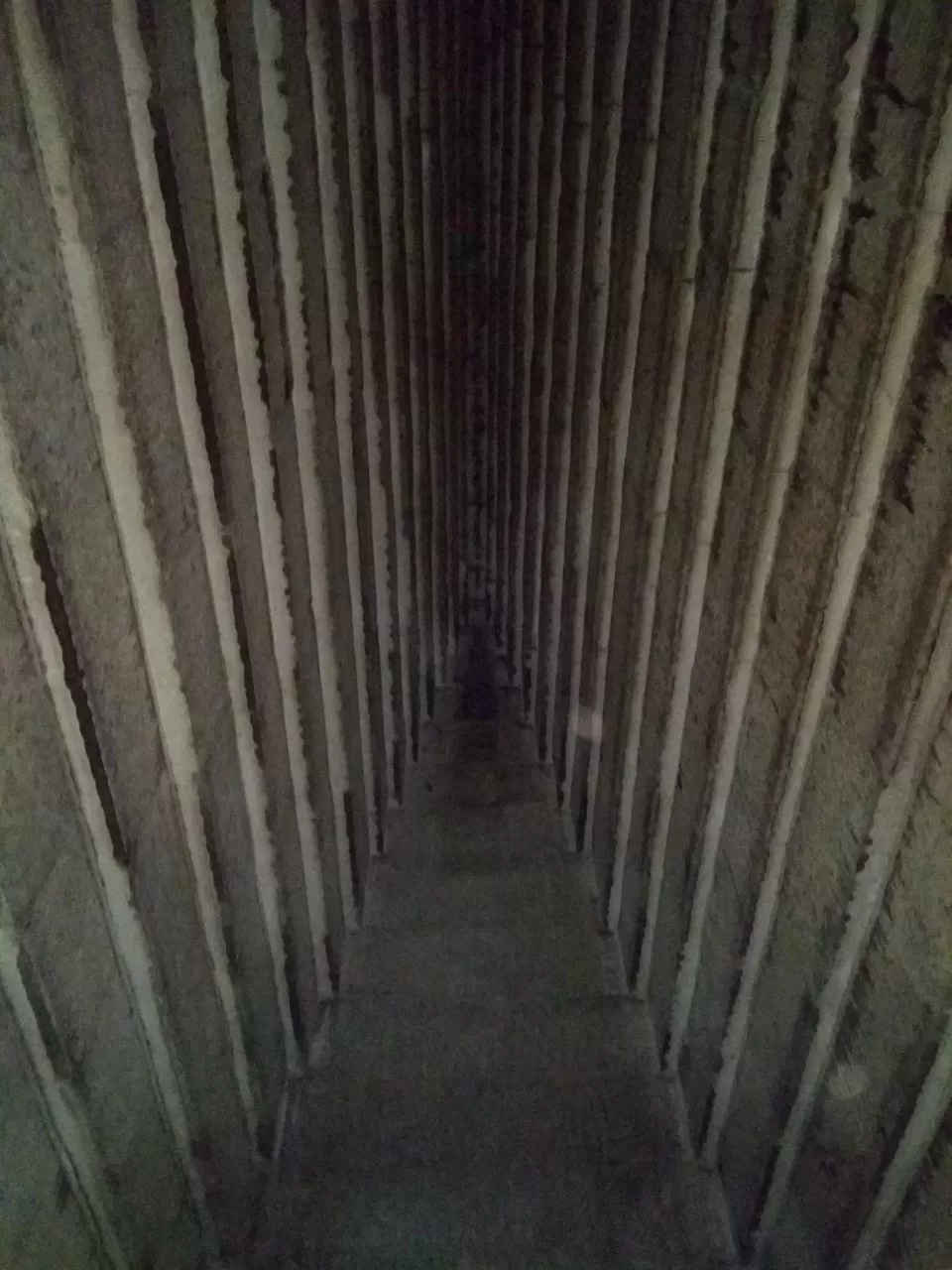
Our tour ended by 1700 hrs. We were dropped back in downtown Cairo. As part of the tour we were also taken to a Papyrus shop. Each tourist company and local guide in Egypt supposedly has a deal with papyrus/ alabastor shops and will definitely take you there. It is interesting to learn how the papyrus paper is made and how the art form is really intricate and delicate. It is not advisable to purchase any souvenirs from these places because the prices are exorbitant. What we thought was great deal turned out to be the worst trade deal in the history of trade deals ever when we found out the cost of the same items being sold in downtown Cairo. However, the quality and variety of products at these places is definitely better than what you will find on the streets. Eventually it all depends on how much you are willing to spend.
We took an Uber from the hostel and drove through the most traffic I have ever seen to reach the airport two hours before the departure of our flight. I was yet to see more traffic in my second visit to Cairo after five days.
2215 hrs | Flight from Cairo to Aswan - ₹9500
(NOTE : Had we booked earlier, this flight would be available at ₹3500. Don't do the same mistake as us)
After walking through multiple security checks we realized that we were out of drinking water. Really thirsty after the the travels of the day I risked taking a gulp of tap water and waited to board the flight to have a second glass rather than purchasing overpriced water at the airport.
(Tip #4 : Always stock up on bottled water)
2330 hrs | Landed at Aswan International Airport
We landed at Aswan with our stomachs filled with EgyptAir food. We had a long day ahead of us which was going to start within four hours. We located our local contact David, outside the airport and left for the hostel.
0015 hrs | Check in at David hostel - $25
David had arranged our lodging, breakfast and conveyance to Abu Simbel along with all internal movement across the city in his car for $25. This was a great deal considering the distance to Abu Simbel from Aswan. David as a person is really nice and makes it a point to personally help all the travelers he interacts with. Please do check out his hostel at booking.com. We met a couple of cool people at this place and had a serendipitous encounter with one of them in Luxor.
0900 hrs | Abu Simbel - E£ 220
It took us four hours on road, driving through the Sahara and witnessing a majestic sunrise to reach the site of Abu Simbel. Home to two massive rock relief temples, which were relocated in 1968 to avoid submersion after the construction of Aswan High Dam. The great temple is dedicated to the gods Amun, Ra-Horakhty, and Ptah, as well as to the deified Rameses himself. The temple is positioned such that twice a year the inner sanctums are illuminated by the sun except for the statue of Ptah, the god of underworld. The smaller temple to the right is dedicated to the goddess Hathor and king Ramesses IIs chief escort Nefertari.






The entry ticket covers the services of guides who are already inside. However, they will explain the history and importance of the temple only to larger groups. Lonesome travelers need to identify these guides and prompt them for their services. The exit of the temple is through a causeway of souvenir shops. Consider shopping only if you are able to strike a good bargain. We left the temple by 1030 hrs and drove back through the desert back to Aswan. We were fortunate enough to spot a mirage on the way.
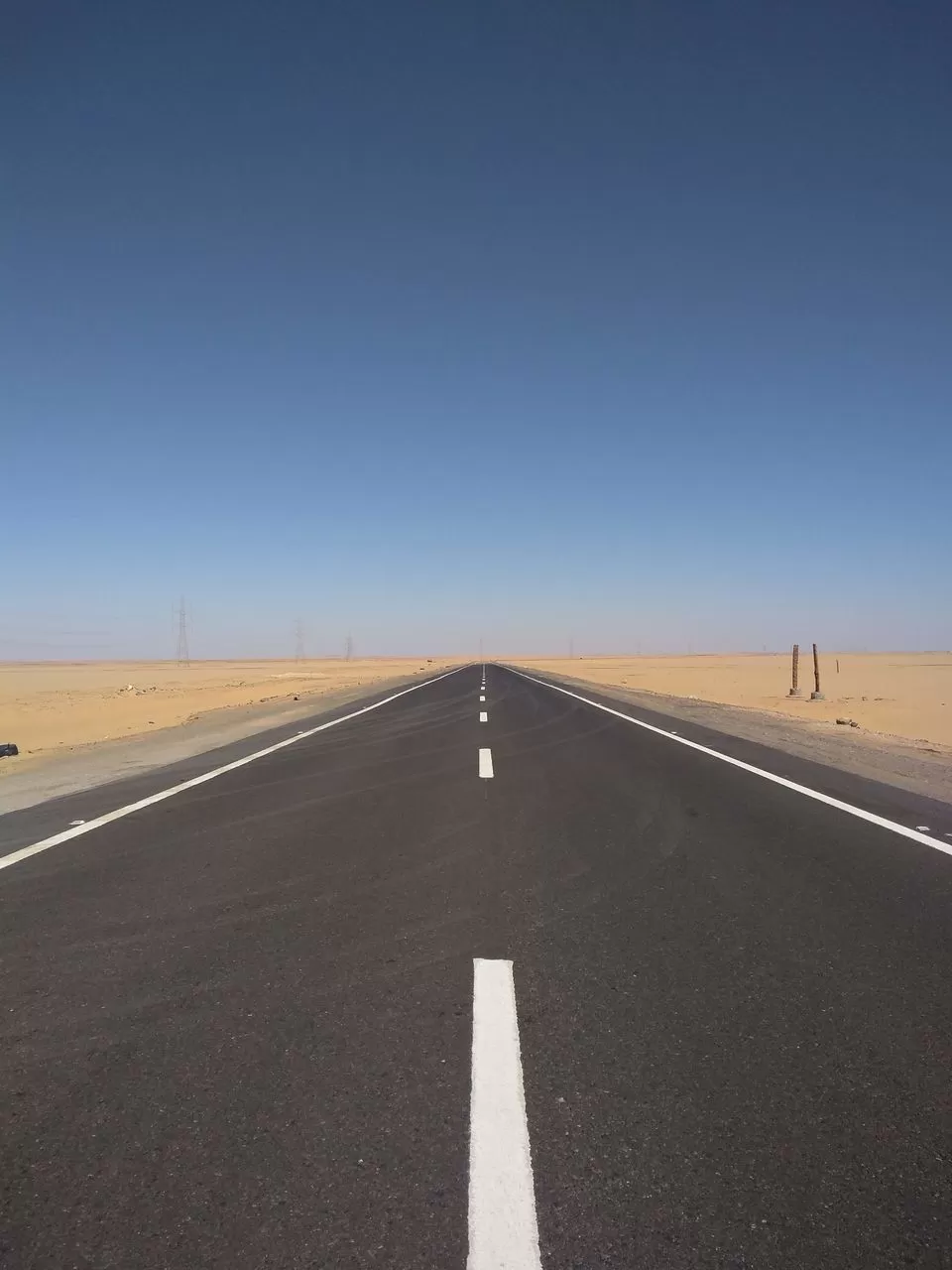
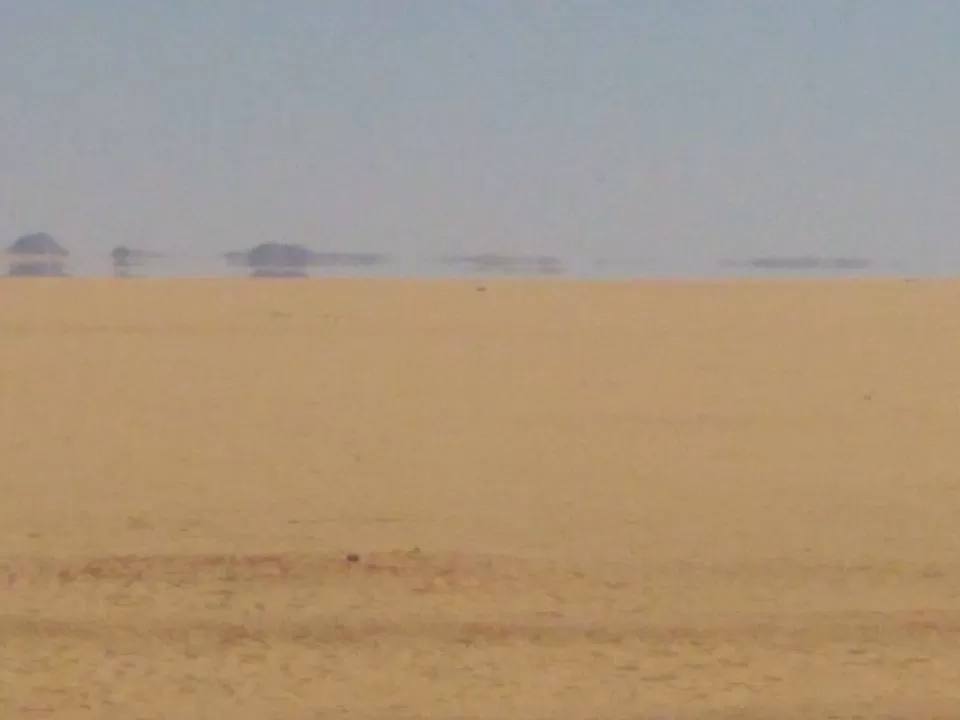
1400 hrs | Philae Temple - E£ 140
This temple of Isis was also relocated from its original location due to the construction of Aswan Low Dam. Located on Agilkia island, this temple has to be approached on a boat. The boat will charge around E£ 100 per person. We shared the ride with another elder (and well-off) tourist who didn't try to bargain. It should be possible to reduce the fare to near about E£ 60 per person. The boat ride is really scenic. You witness the the carving clad walls of the temple rise from the island as the boat approaches the dock. Every nook and corner of this temple is clad with different stories in hieroglyphics. An interesting observation we made here is that most of the carvings of Gods are scratched on the face. Upon seeking answers from a guide we discovered that it was the Coptic crusaders who defaced these gods to dilute the hold of pagan worshipers in this region of Nubia.




David picked us up after three hours from the bus stop near the ticketing counter and dropped us at the Nubian museum. It was just half an hour to the closing time of Unfinished Obelisk and we figured that the museum could be seen later in the evening. We took to the streets of Aswan in search of the Unfinished Obelisk only to walk around this wonderful city in vain. We satiated our hunger by buying confectionery and curd from a small corner shop and walked back towards the Nubian museum.



1600 hrs | Nubian Museum - E£ 140
This museum contains several thousand pieces of Egyptian antiquities that represent the geological, Pharaonic, Roman, Coptic and Islamic heritage of Egypt. Similar artifacts can be found in the Luxor and Egyptian museum as well. The story of Nubia and the growth of its culture and civilization is explained in great detail through these monumental pieces placed across the three floors of this museum.

2030 hrs | Train from Aswan to Luxor - E£ 55
David picked us up from Nubian museum by 1900 hrs. He had brought our bags from the hostel. We got a drop at the railway station and bid him farewell along with a generous tip. The journey was only three hours long by train and we made it to Luxor by midnight. Luxor is infamous for many reasons that can deter tourists. Reaching the city at dead of the night was a risk in itself. We had been warned by our hostel to not talk to anybody trying to offer us help and just walk to the hostel which is walking distance from the railway station. In our paranoia we even refused help from the hostel staff who was already waiting for us on the street.
0030 hrs | Check in at Bob Marley Hostel - $15
All said and done, we checked into the hostel half an hour past midnight and went straight to bed. Our day started early, starting with the complementary breakfast, which also served as dinner for the previous night.
We had planned to cover the west-bank on our first day and east-bank on the second. However, the first day turned out be very eventful and we ended up covering a majority of the identified attractions. By 0915 hrs we had crossed the Nile on a ferry (E£ 5 per person) and hired a taxi to cover the Valley of the kings, Al-Deir AL-Bahari, Medinat Habu and the Colossi of Memnon for E£ 200.
(It is wiser to take the guided tour offered by Bob Marley hostel at E£ 80)
(The hostel also offers a hot air balloon tour of Luxor for E£ 900, offering aerial view of the valley along the Nile)
0945 hrs | Valley of the Kings - E£ 200 + E£ 250
The sight of this colossal burial ground is breathtaking. Only seven to eight tombs are open at a given time, including the tombs of pharaohs Tutenkhamun and Seti I (which are open throughout and require a separate ticket). The entrance ticket covers any three of the opened shrines. We chose to cross threshold to the tombs of Ramesses IV, Ramesses IX and Thuthmoth. The design of each tomb is given at the entrance and our attempt was to choose from diverse layouts.
We also visited the tomb of King Tutenkhamun, because a visit to Egypt warrants that you see the mortal remains of the youngest pharaoh who ruled Egypt. The mummy is very well preserved with only 10 tourists allowed inside the tomb at a time. Photography in this tomb is strictly prohibited.





1200 hrs | Al-Deir Al-Bahari - E£ 100
Famous for the mortuary temple of Queen Hot Chicken Soup (aka Queen Hatshepsut) it is located in the valley basin surrounded by cliffs on three sides. Long ramp like stairs which might have once been adorned with gardens on either side lead to the temple. The middle of the long road from parking to the steps is an ideal location for a picturesque panorama. The insides of the temple feature many statues of the queen Hatshepsut, God Osiris and sphinxes. The walls here are adorned with hieroglyphs just like in the Valley of the Kings.





1300 hrs | Medinat Habu - E£ 80
This is the mortuary temple of Ramesses III. The decorated walls are well preserved as compared to the temples of other kings. It is surrounded by a once fortified enclosure constructed from mud-brick. Just like in Philae temple, some drawings in the main sanctuary are altered by coptic carvings.






1415 hrs | Colossi of Memnon
These twin 18m tall sandstone statues of Pharaoh Amenhotep III are on the way back to the jetty. No ticket is required to view them. This is usually the last stop on the west-bank tour for many operators. People are so tired by the time they reach here that many just choose to click pictures from the car and be on their way. Being dedicated travelers, we chose to witness the colossi from near.



We crossed the river and were back on the east bank by 1530 hrs. We had finished our earmarked attractions of west-bank and still had time and daylight on our side. We postponed lunch to dinner and made our way to the Luxor Temple.
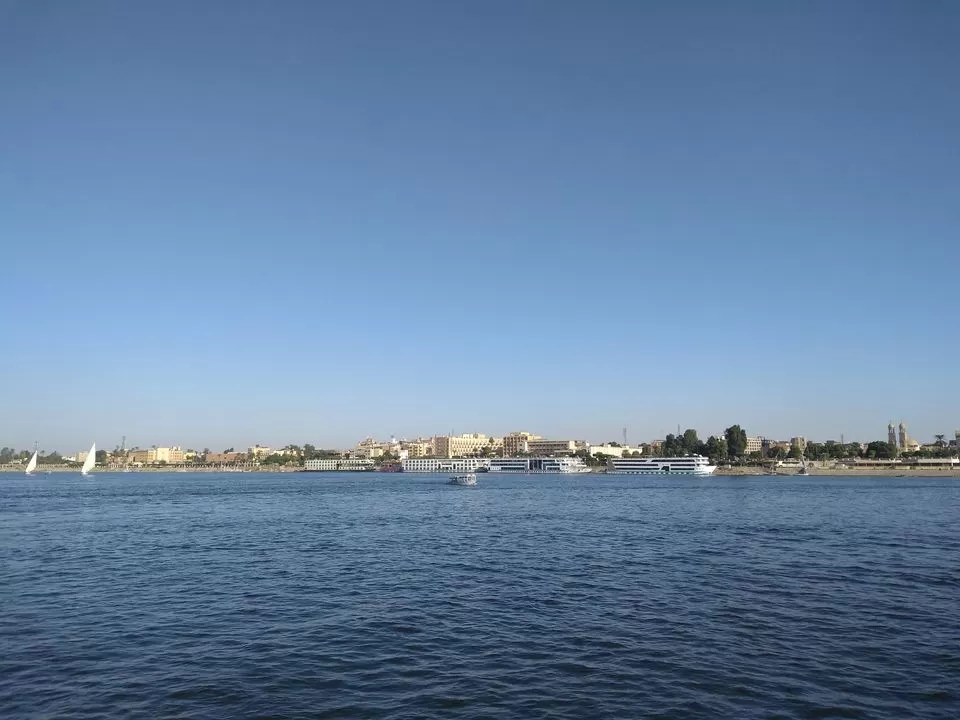
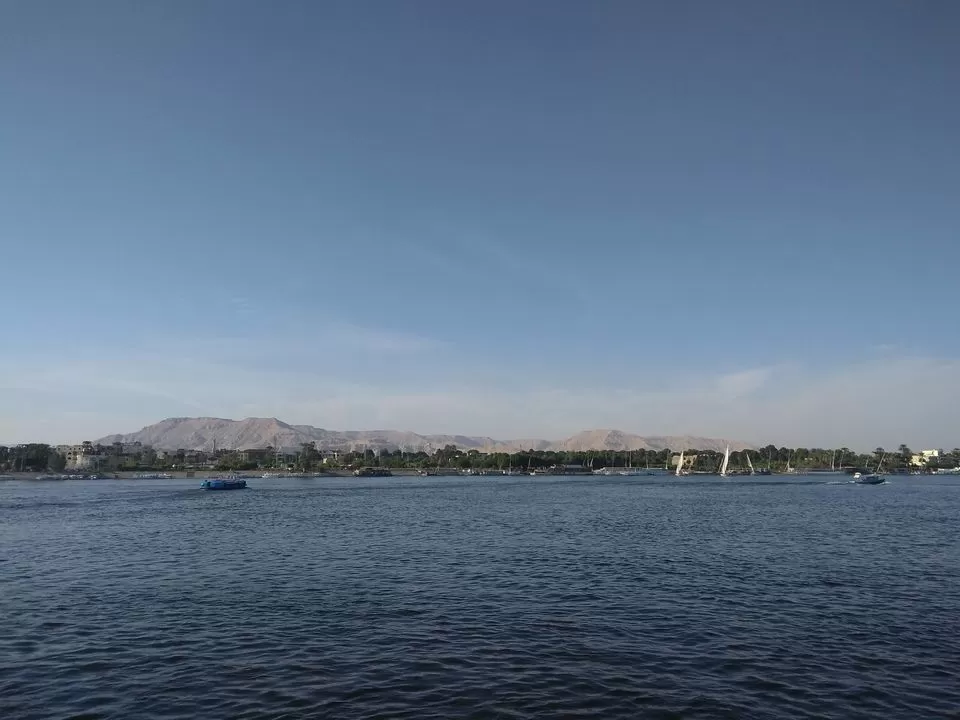
1530 hrs | Luxor Temple - E£ 140
The temple is a five minute walk from the ferry deboarding point. Constructed on the banks of Nile, this temple is not dedicated to a cult god or a deified version of the king in death. Instead it is dedicated to the rejuvenation of kingship, wherein many kings have contributed to the extension and construction of this temple. It has been a constant place of worship since 1400 BC, serving as a Roman Chapel after the conquest of Alexander and now as a mosque. The temple was connected to Karnak by a large Dromo (alley) which is lined with sphinxes on both sides. We were amazed by the sheer size of this temple (it's a dwarf when compared to Karnak) and spent an hour trying to capture the sun through broken pylons. Soon hunger got the better of us and we left for the McDonalds we had seen on the other side of the road.













1700 hrs | Lunch + Dinner at McDonalds - E£ 80
We chose McDonalds over a local eating joint as an abundant precaution against adulterated food. Only non-veg food is served here (unlucky Nikhil), so vegetarian Indians must be prepared before asking for a McAloo tikki. The Big Macs satiated our hunger and served as motivation to walk the Kornish and cover the east-bank attractions we had scheduled for the next day.
1800 hrs | Mummification Museum - E£ 100
We walked 1km north by the Nile to reach here. This museum is a walk-through of the science and art of mummification which is explained in great detail through pictures and demonstrations. The equipment used for mummification process is on display along with mummies of dogs, cats, rams, crocodiles and but obvious, humans. The souvenir shop inside the museum complex sells authentic silver jewelry and hand-painted papyrus. Separate ticket for photography is required for this museum.
1930 hrs | Luxor Museum - E£ 140
This museum features two stories of uncluttered unique and labeled artifacts including many from the excavations at the Valley of the Kings. This is in stark contrast to the Egyptian museum where there is a plethora of archaeological discoveries waiting to be made presentable. This museum also houses the mummies of Ahmose I and Ramesses I.




We retreated to Bob Marley hostel for the night and ended our eventful day. The only pending attraction was Karnak temple. We decided to add a Felucca ride to our plan as we had sufficient time in the eveneing before our train to Cairo. We woke up late to a fresh breakfast similar to what we had the day before. By 0945 hrs we were on the streets looking for a microbus to Karnak.
1030 hrs | Karnak Temple - E£ 150
The word ginormous is an understatement to the sheer size of this temple. We wandered the hallways and pylons wondering if we had already covered them. The hall of hypostyles houses a total of 134 huge pillars, each one engraved with a different story in hieroglyphs. The east end of the temple is under restoration and if you are lucky, you can find some authentic ancient Egyptian souvenirs scattered in the rubble of this glorious monument.






After spending almost half our day at Karnak, we left for the hostel wondering if we had seen everything the temple had to offer.
1430 hrs | Felucca Ride - E£ 120
We had arranged the Felucca ride through the hostel after having suffered a loss on the west-bank tour. The ride included to a halt at Banana Island for some fresh bananas and return after sunset over the Nile. It was a very pleasurable and memorable experience, drinking mint tea and enjoying 3 hours of serenity after more than 6 days of hectic travel.










We walked back to the hostel from the jetty and sat in the lobby to charge our phones. We left by 1830 hrs for the railway station.
1920 hrs | Train from Luxor to Cairo - E£ 120
Most of this ten hour journey went in deep sleep. I woke up only one station before Ramses station.
0500 hrs | Arrival at Ramses station Cairo
The driver was to pick us up at 0800 hrs and we used the three hour buffer we had to enjoy a falafel sandwich at the food court.


0800 hrs | Bahariya Oasis and Bawati White Desert Camping - $120
(This tour was arranged through Western Desert Tours and included pick up from and drop to Cairo, and everything in between)
The drive through the desert was exhilarating. When we left Cairo the skies were grey and we encountered rain along the way. We hoped that the weather would not be the same at Bahariya. In the four hour drive to the Oasis we saw drastic change in our surroundings. The sand changed colors from brown to black to white and even red in some places. The dark gloomy sky had transformed into a sunny field of cotton candy clouds.
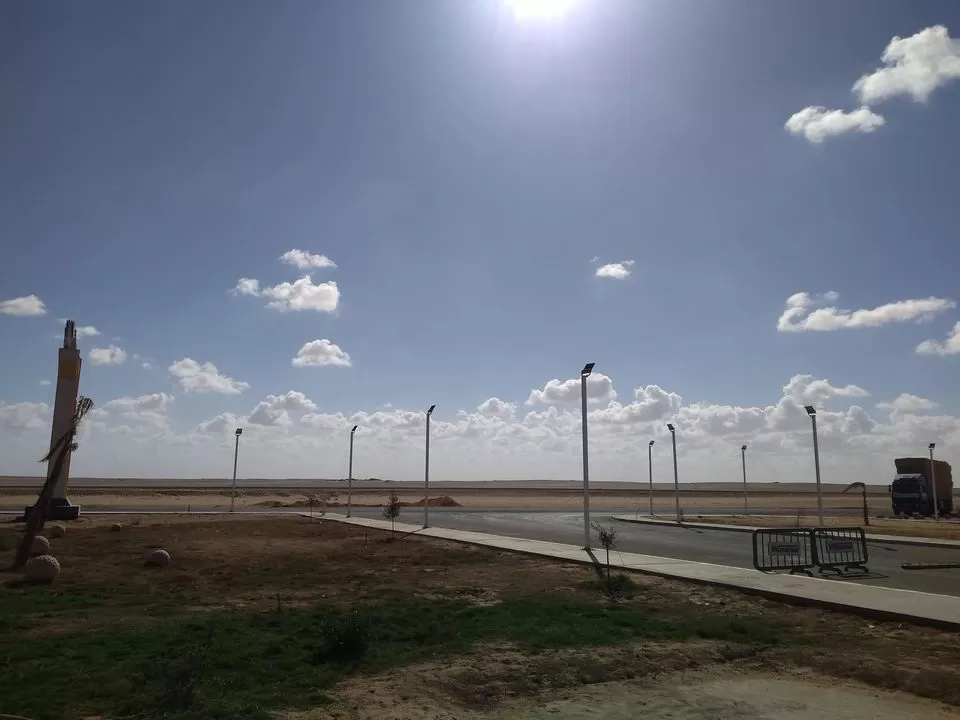
We stopped at the Oasis where our tour operator had arranged for a traditional lunch. The actual desert ride was to begin from here. We transferred our luggage to a 4x4 Toyota Land Cruiser which was already packed with tents and food for our journey into the vastness of Bawati. On our way we made pit-stops at the black desert which is remnant of a volcano from the past, hot springs which spurt out sulfurous mineral rich water, the crystal mountain famous for chalk rocks and a small dune for our first attempt at sand-boarding.










We reached the white desert around sunset and caught a glimpse of the famous chicken and mushroom. The artwork of wind on this vast slate of nature is truly mesmerizing. One can imagine rabbits, ducks, sphinxes and even faces of pharaohs in these sculptures carved by the wind. Our tents were up before the sun went down.
I went for a walk towards the rising moon and tried to take in the vibe of the majestic site I was witnessing. The driver who was also a cook prepared a sumptuous dinner which included barbeque chicken over the campfire. After the dinner we enjoyed traditional Libyan mint tea (4 cups of it) by the fire under the moonlit sky. The night we camped was a full moon night hence the white desert was lit up in an unearthly aura. The feel would be different on a new moon night when the stars would be much more clear and hopefully you can catch a glimpse of the Milkyway. After the tea and campfire music, we took another stroll through the desert and went to sleep under thick camel blankets and a starry sky awaiting the sunrise over the white terrain.
The tent was pitched with the open end facing east. We woke up at the break of dawn to the glorious sight of sun rising over the white desert from the east and the full moon setting towards the west. The multi-talented driver made us breakfast with fresh cut fruits and pita bread served with assorted fruit jams and cheese. We left the desert by 1000 hrs to have lunch at Bahariya oasis with our tour operator Khaled.





Khaled seemed like the godfather of Bahariya, with his own rock garden full of various fossils and exotic crystals. He advised us to try the two nights camping tour if we ever return to explore deeper into the deserts. This would have been a better option for us if we chose to drive through the desert from Luxor to Cairo instead of taking the train and only going about halfway down.

After a shower and a lavish lunch we were back on our way to Cairo.
1830 hrs | Check in at Safary Hostel - E£ 220
It was already dark by the time we reached Cairo. We walked back into the hostel with the same rooms as before waiting for us. After a quick fresh-up, we decided that instead of lazing around till dinner, it is better to use this time for a walk through Islamic Cairo and experience the magnificence of Khan-al-Khalili at night.
2000 hrs | Islamic Cairo
This region of the city is a thirty minute walk from downtown Cairo. The roads leading here are lined with shops offering carpets, curtains, perfumes, traditional clothes etc. It is a very different feel as compared to the market of Luxor, where hassling seemed like a way of life. Markets in Cairo were in general calmer but not quieter.
2030 hrs | Al-Hussein Mosque
Right next to the outer circles of Khan-al-Khalili where most of the eateries are set, is the Mosque of Hussein, son of Ali and grandson of Prophet Muhammad. Housing the oldest complete manuscript of the Holy Quran and being the burial place of Hussein's head (rest of his body is buried in Mecca), this mosque is one of the holiest sites in Egypt. People of all religions and faith are free to enter and experience the spirituality this place has to offer. Although the entrance is free, the gatekeeper does ask for barakat (a.k.a blessings, a.k.a money).

2045 hrs | Khan-al-Khalili
This historic souk (bazaar) was the trading center of Egypt in the 14th century. Merchants from neighboring regions would come here and sell wares from their land. Nowadays the market is generally visited by tourists to buy souvenirs, antiques and jewelry. The periphery of the market is lined with coffeehouses and shisha (hookah) cafes. The prices quoted by the shopkeepers are not exorbitant, however, it is foolish not to hassle. Similar goods are also available in local shops located in downtown Cairo as well. It is wiser to visit both these places and then make your purchase. We bought papyrus paintings and pyramid paperweights as gifts for friends and family and left this peacefully chaotic market to go look for dinner.



2230 hrs | Koshary El Tahrir - E£ 20
Walking back the same strenuous route from Khan-al-Khalili through the still bustling streets we reached the doors of Koshary El Tahrir. As the name suggests, this restaurant serves koshary near the Tahrir square. Koshary is a fully vegetarian (lucky Nikhil) Egyptian dish which is prepared by adding spiced tomato sauce, garlic vinegar, chickpeas and crispy fried onions on a base of rice, macaroni and assorted lentils. Garlic juice and Hot sauce (extremely hot in my opinion) can be additionally added as per taste. All you have to do is tell the waiter which size bowl you want, small, medium or large. Medium bowl per person turned out to be too much for us. I left the place with my bowl half full and my belly half empty.
By the time we reached Safary hostel, the market was closing and we gave some end of the day business to a fruit vendor by purchasing guavas and bananas.
It was a hectic day of travel, both by road and by foot. We slept on proper beds after more than 48 hours. The rising sun brought with it the daunting task of exploring the Egyptian museum. We had been told that tourists start to line up for tickets an hour before opening hours and by the time we left after breakfast, it was already an hour past the opening time.
1000 hrs | Egyptian Museum of Antiquities - E£ 300
We walked towards Tahrir square, adjacent to which the 117 year old museum stands. True to our information, there was indeed a huge line of tourists waiting outside the museum. Luckily this was just for baggage check and diverged into many ticketing counters inside. To make circumstances more easier for us, there was a special counter for tour operators and guides. We had bought the tickets for entry into the museum and the royal mummies hall within ten minutes of our arrival. Separate ticket for photography inside the museum is required.

The museum houses more than hundred and twenty thousand ancient artifacts including the mummified bodies of many pharaohs, the golden mask of King Tutenkhamun and the only known figurine of King Khufu.
We entered the museum and headed straight for the royal mummies hall on the first floor. This climate controlled room has around fifteen mummies encased in glass boxes on display. Looking at the intricate human features that are still visible after more than 4000 years of preservation will leave any tourist awestruck. Details like teeth, nails, hair, facial features and even wrinkles give the mummified body a very human-like feel. There is a similar room with different mummies on the opposite end of the museum and another chamber for mummified animals. We spent a majority of our time admiring the mummies, doing multiple rounds of the same room.
We traversed a major part of the first floor covering many antiquities to reach the chamber where the contents of King Tutenkhamun's tomb are on display. These artifacts are untainted by any tomb raider and were recovered as it is from his tomb KV62 at the Valley of the Kings. This collection of more than 5000 exhibits gives a very clear picture of the life and assumed afterlife of the teenage king. The most iconic of these is the golden death mask which adorned his mummified head.
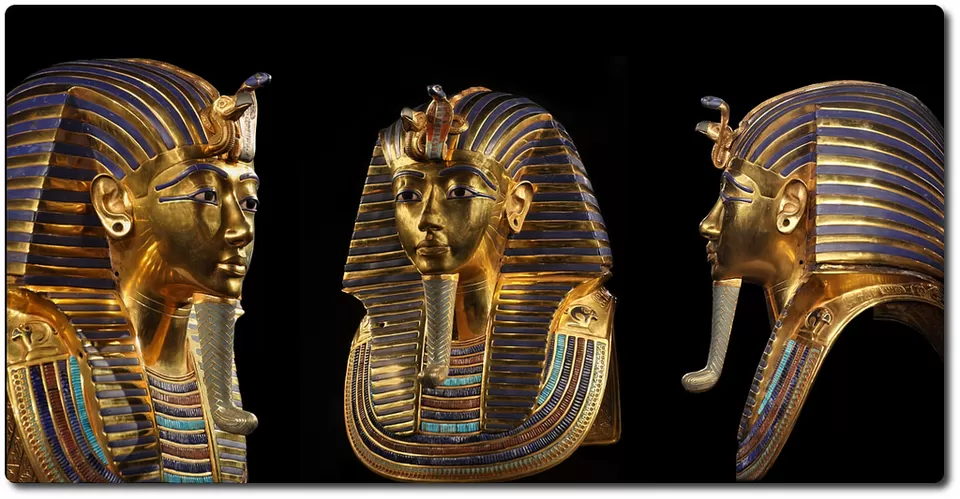
It is embedded with many precious stones which form the eyes, eyebrows, necklace, beads, collar, false beard and the crown of the mask. Gazing into the black quartz eyes of this face gives an unrealistic feeling, teleporting you to the age of ancient Egypt, a land of magic and wonder.


We covered the remaining labeled chambers of the museum, which contained many unlabeled items, ranging from pottery and stones to sarcophagi and statues in search for the small figurine of King Khufu. We located it on the ground floor in the corner of some hall. Considering that it is the only known and identified three dimensional depiction of the king who built the pyramids, the attention this ivory statuette gets is very minimal.

We left the museum exhausted, both physically and mentally. The museum had a plethora of poorly organised information to offer and we merely had four hours at our disposal. Hopefully this antiquities collection will be categorized, catalogued and displayed systematically at the Grand Egyptian Museum which is slated to open in a year or two.
1315 hrs | Tahrir Square
We exited the museum and took a walk around Tahrir square. Originally called Ismailia square, it became widely known as Tahrir (Liberation) sqaure after the revolution of 1919 and was officially renamed after the revolution of 1952. This public town-square has been the focal location for many political demonstrations in Cairo, the last one being the Egyptian revolution of 2011 which led to the resignation of President Hosni Mubarak.

By now we had become accustomed to not sacrificing lunch, thanks to the desert camping experience. We found a local eating joint by the name of Felfela express about a mile away, recommended to us by our guide; Google Maps.
1400 hrs | Felfela Express - E£ 20
This restaurant turned out to be the take-away outlet for the well established Felfela chain. The food was pretty cheap and the taste was also quite decent. They didn't offer a lot of vegetarian options, but the available ones were really good. We tried the foul which is basically pita bread stuffed with fava beans, and chicken shawarma.
1500 hrs | Cairo Tower - E£ 190
With the entire evening at our disposal, we chose to cross the Nile and walk to Cairo tower. The towering building was visible from Tahrir square and we followed it like the pole star without support from Google maps. This 187 meter tall tower features a lotus-like thin shell structure as its exterior design, an observation deck and a rotating restaurant. The topmost platform offers a view of the entire city. Our expectation to see the sun set behind the pyramids was crushed because it wasn't the right time of the year. However, we did get a good view of the Citadel of Saladin (and random apartment balconies) using the telescopes provided.





We spent a good three hours on the top of the tallest building in Egypt and North Africa and descended only after sunset. Not because the view of sunset is worth waiting fro so long, but, because the ticket price is atrocious for foreign visitors (six times that of locals).
We had spotted the arena set up for the Cairo International Film Festival from atop the tower and ventured into the venue, entirely clueless of the talent surrounding us. After realizing that only pre-registered members could attend the screenings, we walked back towards our hostel with dreams of a free movie night shattered.
We retreated back to our hostel after a dinner of sandwiches and fruit juice and finished packing our bags before heading to bed. Our last day in Egypt began with breakfast and an Uber ride through Islamic Cairo to the Citadel of Saladin.
1000 hrs | Citadel of Saladin - E£ 140
This prominent medieval fortress of Kurdish ruler Salah al-Din is now home to three mosques and seven museums. It was built in the latter half of 12th century on a promontory of Muqattam hills as protection against the crusaders. Saladin also set out to build a Nile to Nile wall around the citadel (inspiring Trump ?), the construction of which could not be competed in his lifetime. The citadel derived water from the 85m deep Well of Joseph which can still be seen today.
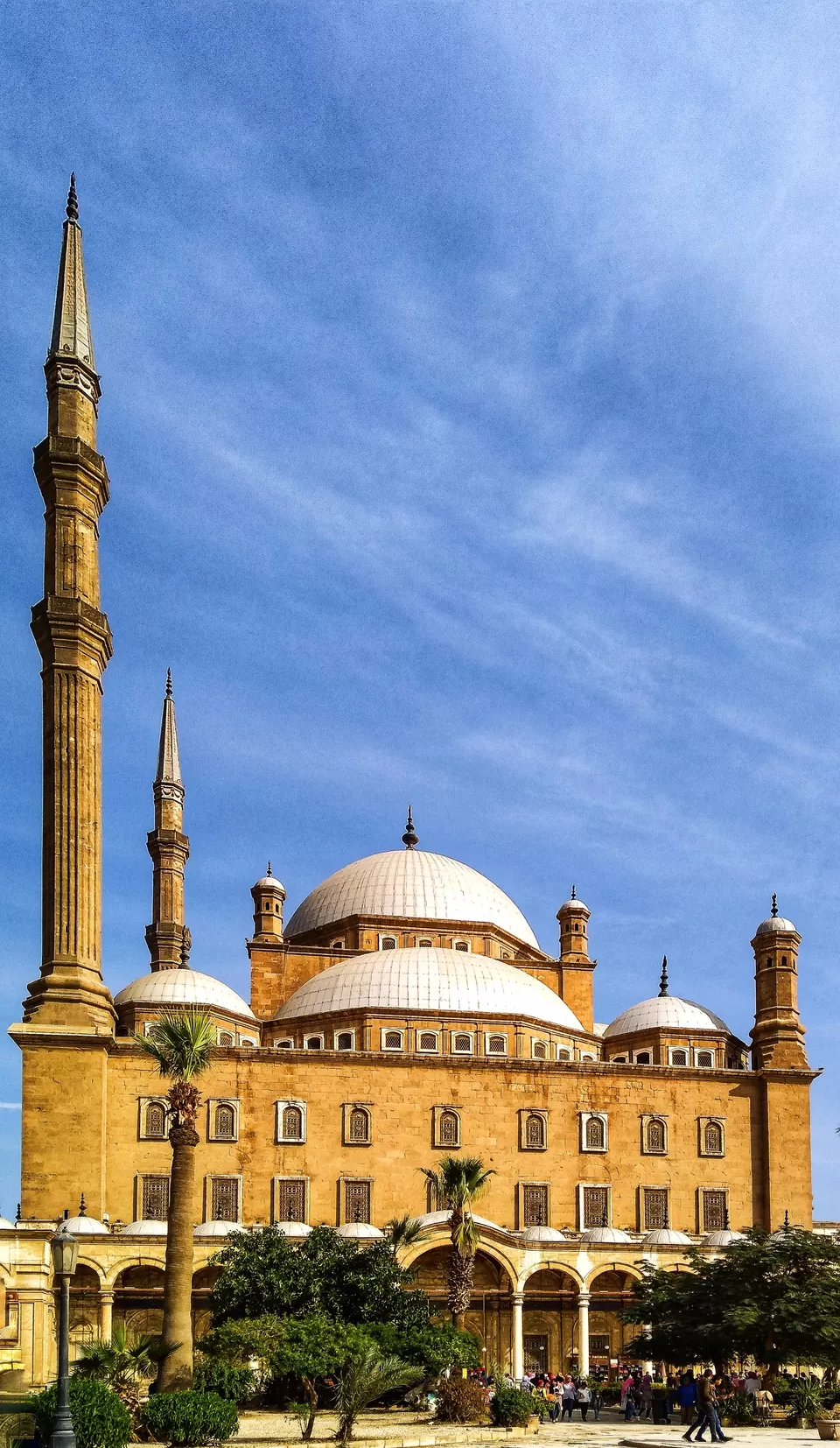







We visited all three mosques in the compound and caught a glimpse of Persian and Ottomon architecture. The fortress premises also have the National Army museum and the National Police museum which serve as a guide to the heritage of Egyptian warfare.

We were on our way back to Tahrir square in an Uber by 1230 hrs. In search of ice-cream to battle the hot Cairo sun, we found ourselves following softy slurping pedestrians to El Abd bakery.
1300 hrs | El Abd Bakery - E£ 20
More sophisticated as compared to other bakeries in the neighborhood, El Abd had variety beyond compare. Too engrossed in all the confectionery surrounding us, we ended up buying pastries instead of ice-creams. With our hunger satisfied, we proceeded towards the hostel halting briefly at a juice shop for some mixed fruit sherbet.
We checked out of the hostel by 1400 hrs, bidding farewell to all the familiar faces we had seen since our first arrival seven days back. With more than six hours and less than E£ 100 in hand, we decided to take a bus to the airport rather than a cab.
1430 hrs | Abdel Moneim Riad Square
Despite being advised to board the direct AC bus to airport, we got on a normal bus pointed out to us by a helpful commuter. We traveled across Cairo for the next three hours in heavy traffic, going in all directions but the one leading to the airport. The last half hour of this ride was spent in the suspense of predicting the next turn of the bus. Luckily the helpful commuter was correct and the airport shuttle stop was the final destination of this bus.
2005 hrs | Flight from Cairo to Trivandrum (via Bahrain) - ₹12010
By 1800 hrs, we were at the airport, the place where our Egyptian adventure had begun. However, the adventure had not ended yet. Our connecting flight from Bahrain was preponed and we had only 40 minutes after our landing to get on the connecting flight. The reassurance of Gulf Air crew was our only hope. We took off right on time at 2005 hrs, waving good bye to Cairo as our aeroplane ascended.
0110 hrs | Landed at Bahrain airport
Ten minutes of deboarding, ten minutes of bus ride to the terminal, ten minutes of security check (which included belt and shoes removal) and five minutes of gate searching later, we were seated on Gulf Air flight GF0060 to Trivandrum. The risk of missing office had made us function at double alertness in these late night/early morning hours of sleep deprivation.
0150 hrs | Flight from Bahrain to Trivandrum
Tired from the ordeals of yesterday, the three hours to homeland went in blissful sleep, filled with dreams of trips yet to come.
0855 hrs | Landed at Trivandrum
As a reader, you might suspect that this is where the adventure ends, however, the shattering episode of Trivandrum airport and our confrontation with prepaid taxi union, is a tale to be told in person.
By 1100 hrs we were back in office, doing our day job, and absentmindedly thinking - where next ?
Share the trip with your friends and family and wish-list it if you want to undertake a similar journey.
Follow me on Tripoto for more itineraries of exciting adventures.
Until next time.



